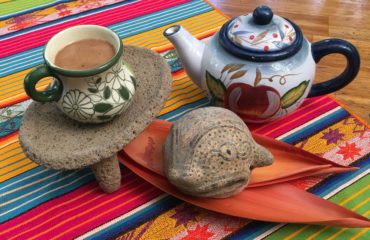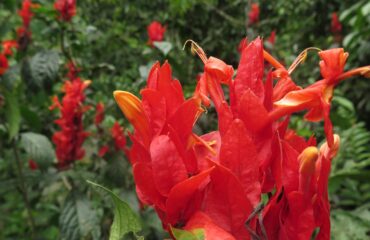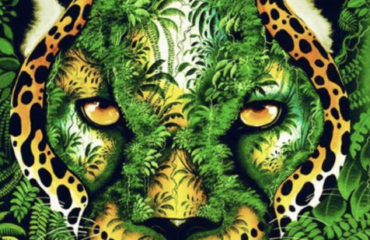
At the “Great Earthen End of the World Jaguar Mountain,” the isolated limestone massif ~ today known as: Cordillera Napo-Galeras, part of Sumaco Napo-Galeras, one of Ecuador’s most recently declared National Parks.
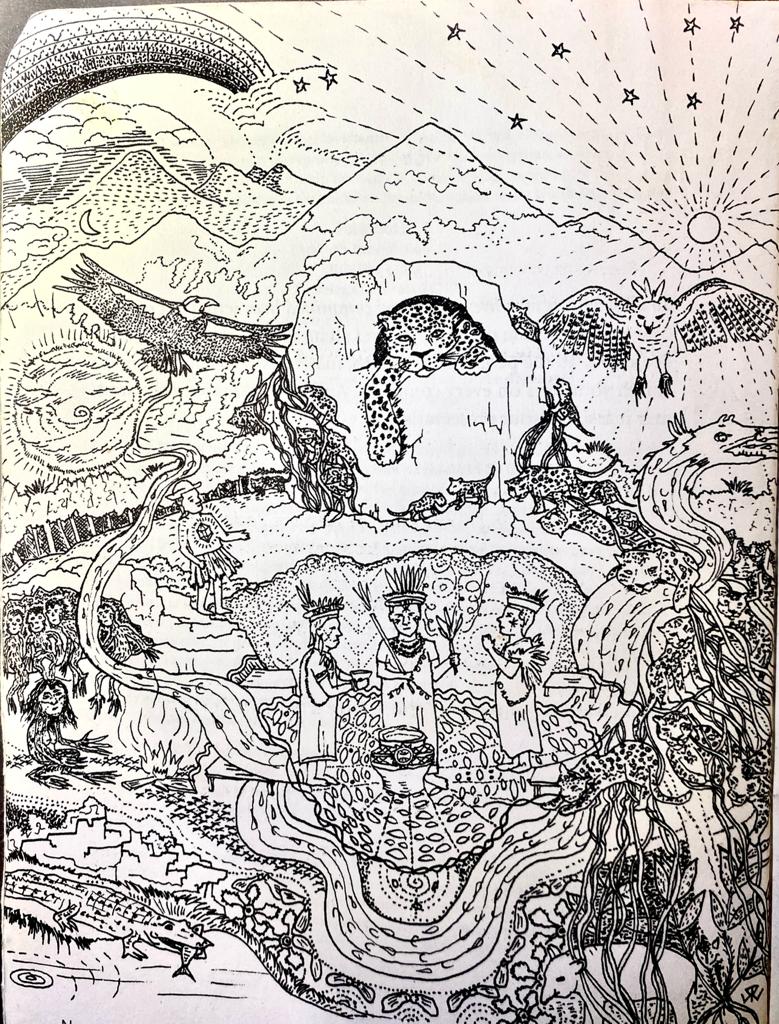
The High Hill ~ House Mountain ~ Cordillera Napo-Galeras
In the early 90’s I met Casimiro Mamallacta Mamallacta, a wholehearted Kichwa elder and traditional adept from the outskirts of Archidona. I wrote about Taita Casimiro and some of the experiences shared and learned from this happy camper in chapter 8, “Eyebrows of the Andes,” in my book Rainforest Medicine – Preserving Indigenous Science and Biological Diversity in the Upper Amazon. Between the years 1990-1994 we focused our efforts, in a way much like placing a magnifying glass in the sun to concentrate a beam of energy, into an inspired focus, capable of ensuring the ecological integrity of a place of great environmental and culture importance. Cordillera Napo-Galeras, not just an isolated limestone massif rising up from the lowland Amazon 80 kilometers east of the Andes. Not just a place rich in endemic species at the epicenter of botanical diversity. Yet as well a place enshrouded in profound ancestral belief among the region’s Indigenous peoples; most particularly among the community wisdom keepers, as a holy site with mythic connotations attesting to the veracity of the great deluge, while endorsing premonitions of yet another apocalypse.
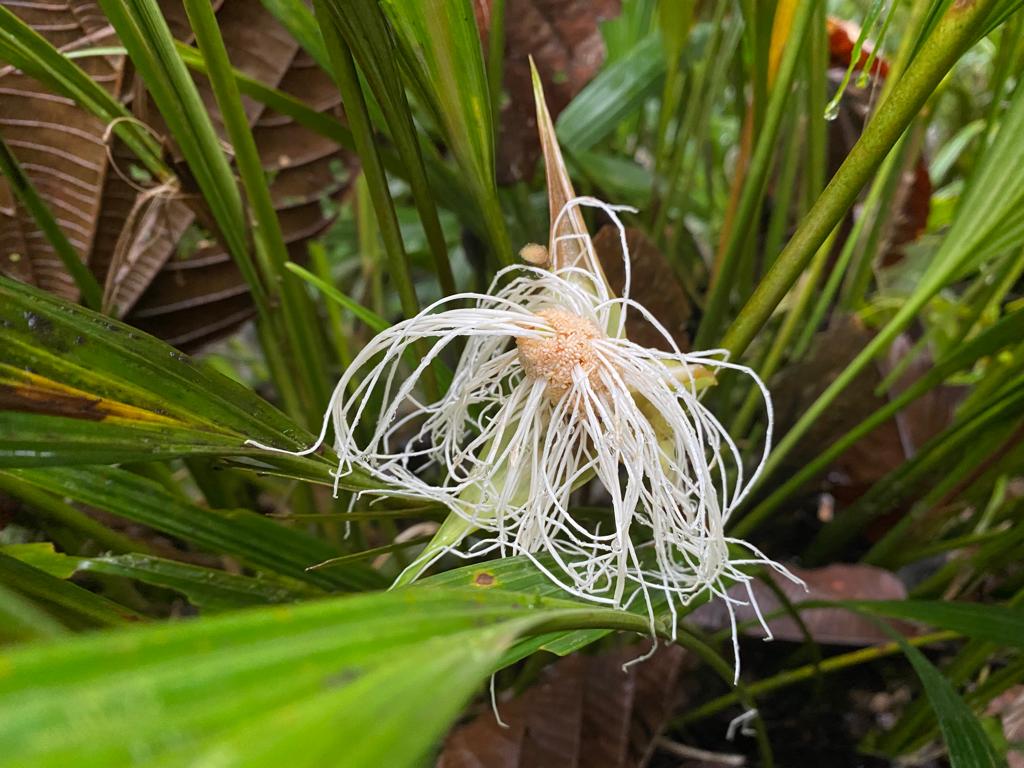
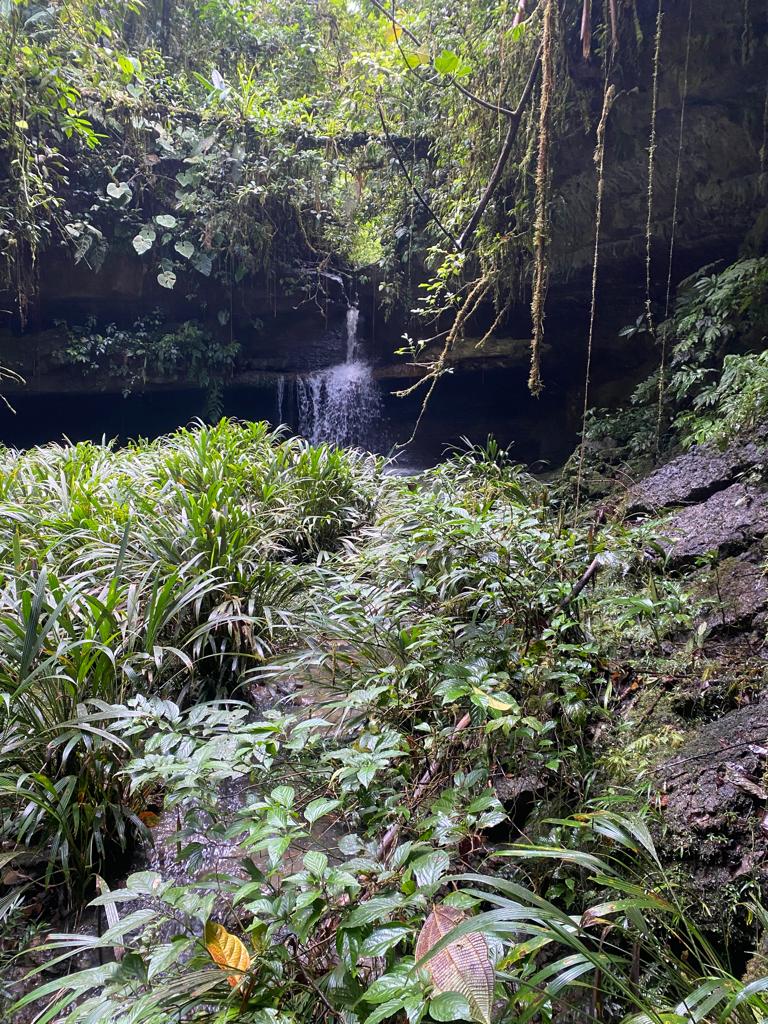

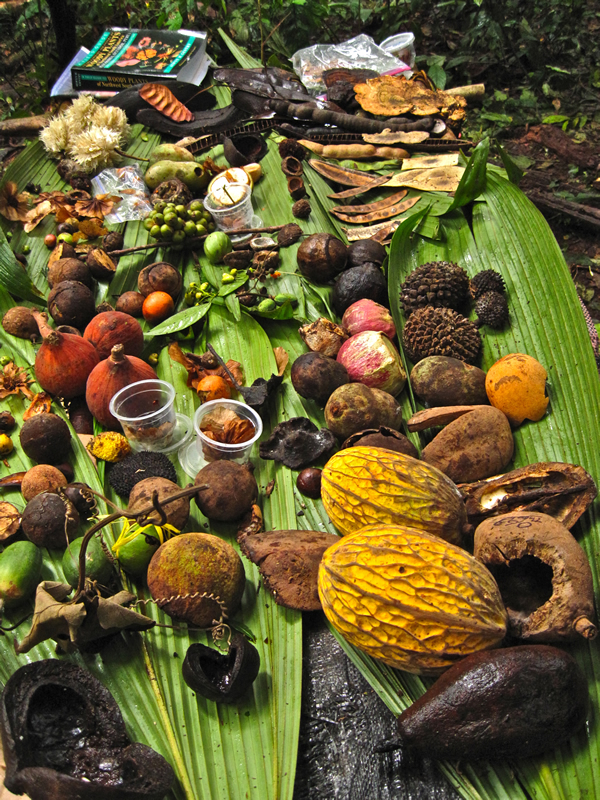

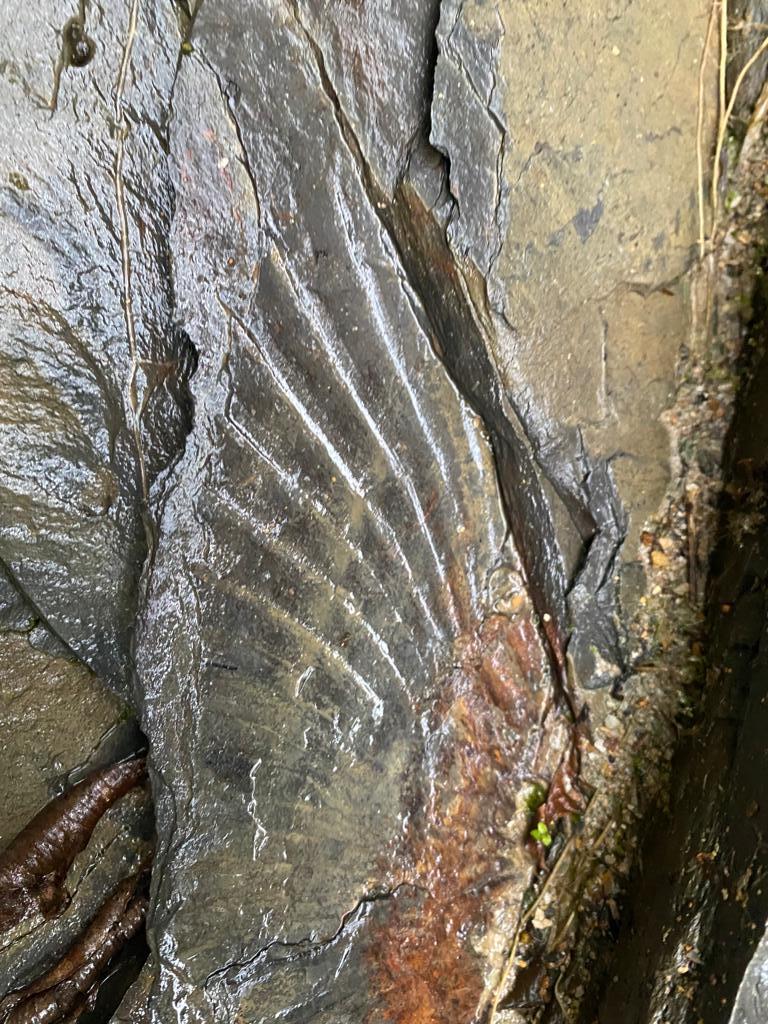
A Biological Diversity Wonderland Woven in a Mythic Fabric
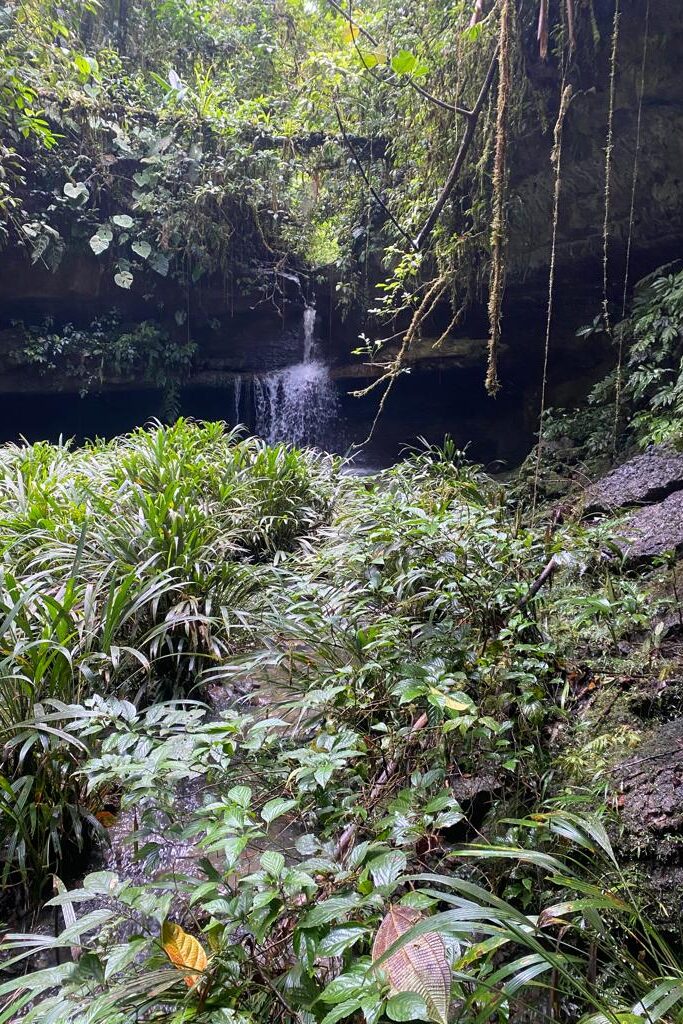
Not just a place rich in endemic species, at the epicenter of botanical diversity, yet also, a place woven in a mythic fabric among the regional indigenous peoples.
Cordillera Napo-Galeras, known as the “Great Earthen End of the World Jaguar Mountain,” where from within will emerge the “Great Earthen End of the World Jaguar,” the Izu Mangallpa, or Mundo Puma, that Runashimi ethnopoetics relates will devour offending humanity. Among the Siekopai the mountain is known as Jaicunti, the “High Hill,” within which abide the Jaicunti Pai, “Immortals of the High Hill,” the unfailing, ultra immaculate, fluffy clean medicine guides of the ceremonial plant medicine tradition of Yagé. Healers associate with these immortals to accomplish their effective spiritual cures. And to the Woarani, the mountain is known as Unkiyabe, “House Mountain,” a place where in times of old, Waorani families escaped the great deluge. Mengatue the Jaguar Shaman related that inside this mountain live immortals known as the Monakagaeiri. Elders relate them to be small in size and that they once lived among humanity benevolently teaching the early people how to live in the wilderness. The mountain is also known among the Waorani as Ewhengawehyabo, the “Humanity Devouring Jaguar-nip Mountain.” Waorani mythology relates that when heaven and earth split a celestial goddess brought the Waorani to the mountain, indicating to them the limits of their earthly territory. She informed them that when all fails, it will be from here where they are to request her intervention. She requested that from here nothing be taken. Heeding the warning, a mischievous viewer, took a branch from the tree where Jaguars of many sizes where lounging. When the plant at his community below sprouted, out of the plant came a giant jaguar that devoured half the village! When the plant was cut down, the giant jaguar swiftly loped back to the mountain, where it disappeared, inside the mountain itself.
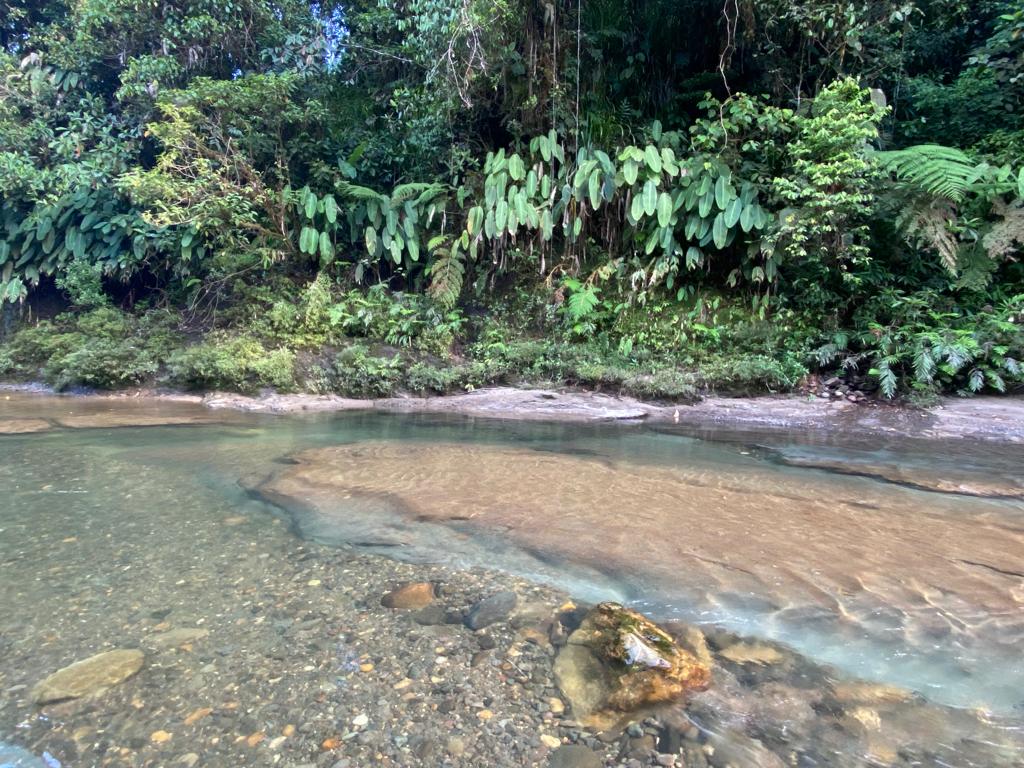
to purify themselves at the wee hours of dawn, before the hummingbird swims, and to drink Guayusa.
At the Epicenter of Botanical Diversity
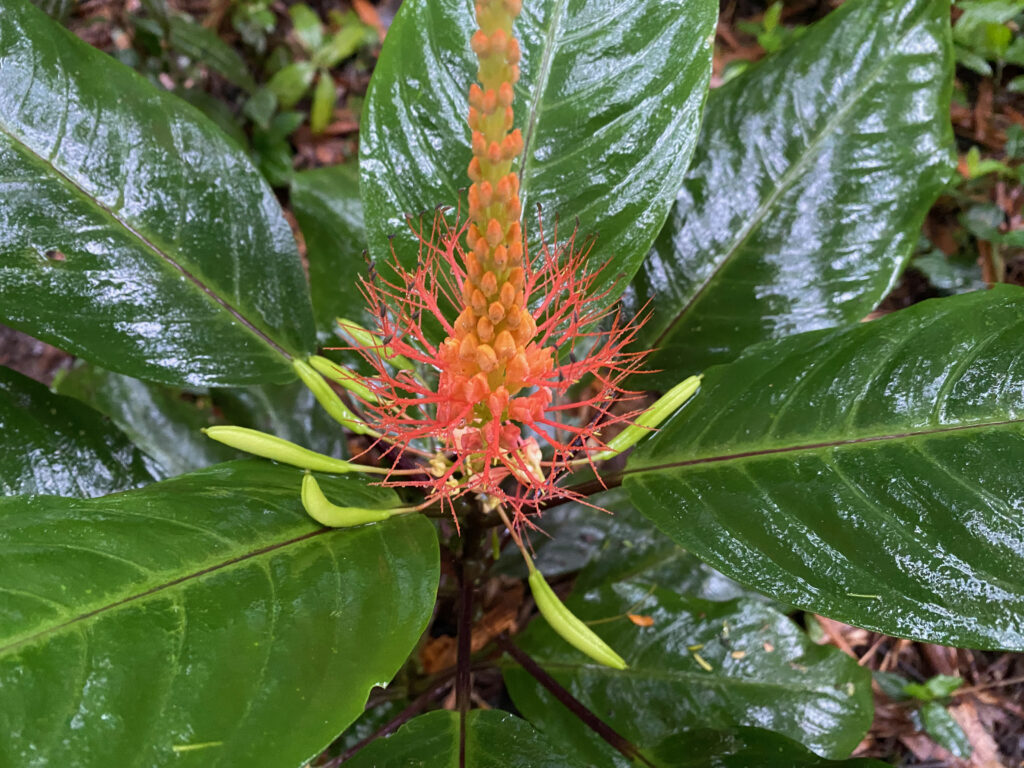
When I first started hiking to Napo-Galeras it was an arduous several days trek from Archidona, and through literally knee deep mud! As the years passed new roads pushed deeper and deeper in the wilderness. One of the roads, the Hollin-Loreto road, we can sadly say has been an absolute ecological disaster, opening an exquisite wilderness area at the base of the Andes to a flood of human intervention. Piercing through a remote virgin valley between the mountains of Sumaco volcano and the cordillera Napo-Galeras, an area that soon botanists from the Missouri Botanical Gardens would determine to be the epicenter of botanical diversity.
As colonist settlers rushed into the area to claim lands the rainforest began shrinking in the wake. The original protection category granted to Sumaco and Napo Galeras region in 1987 shrank in size by three quarters when the two mountains were declared a National Park in 1994 losing millions of acres of rainforest to the impact of human settlement complexities. I might add, the original protection status came in 1987 when USAID gave the funds for the bridges to built the Hollin-Loreto road. Since then small towns like Huaticocha have now burst in size with the swift passing of time. And It was here that in the year 1994, from within the limits of the Napo-Galeras National Park, that I oversaw a process that relocated six colonist settler families. It was promised to them that if we could not improve their situation, then we would do nothing. Two large farms near Huaticocha were purchased and divided into lots for these settlers, and we won their hearts over forever! That was an adventure all right!
The new roads made possible the pillage of the old trees, and giant trees of many kinds would be seen on trucks being hauled to the mills. One among these, is Kamotoa. A towering canopy tree reaching heights up to 40 meters (131 feet) as yet unnamed to science. A locally endemic tree found only within a narrow band along the eastern base of the Andes, on limestone subsoils; today nearly extinct due to unregulated logging. Amazingly so this tree has only recently been described in 2002, named by Ecuadorian dendrologist Walter Palacios as Gyranthera amphibiolepis; pertaining to the Malvaceae botanical family.
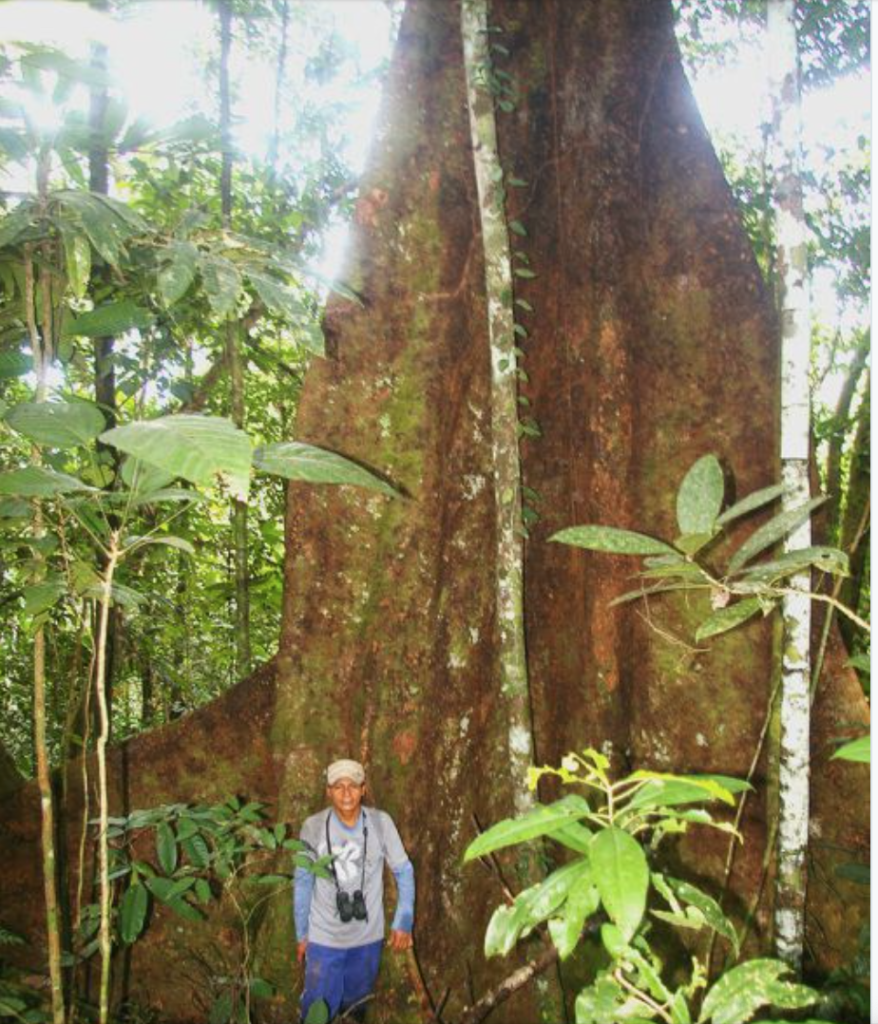
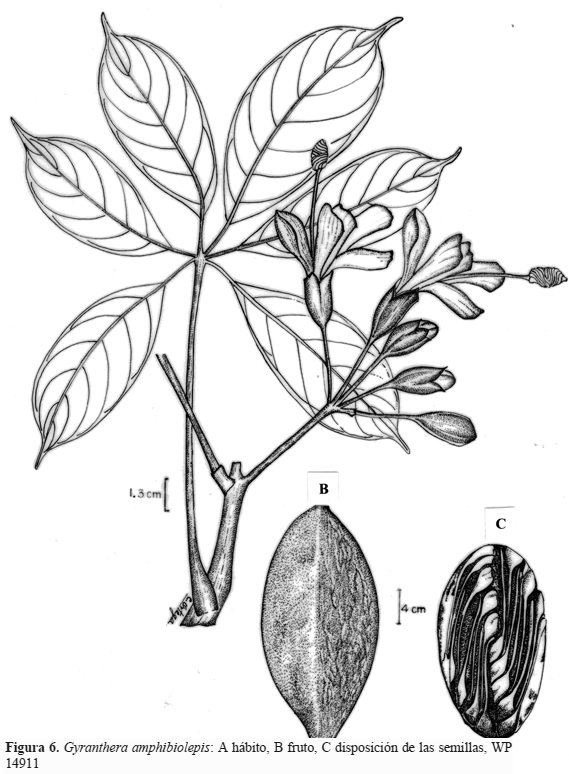
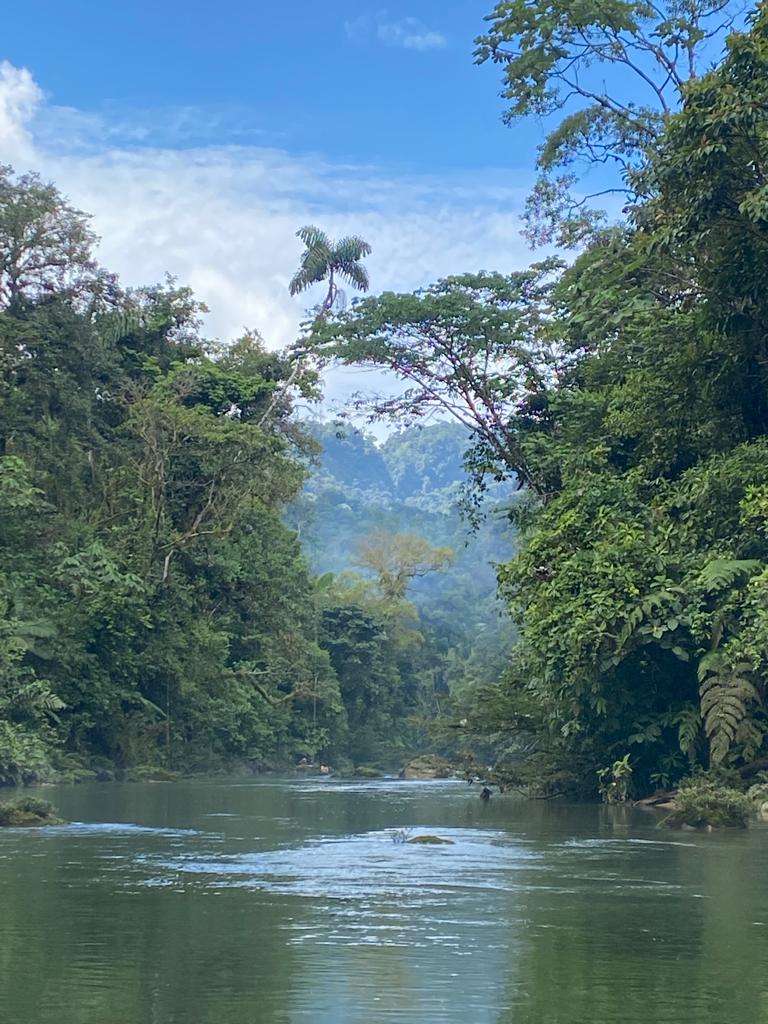
Demarcation and Protection of Napo-Galeras: 1990-1994
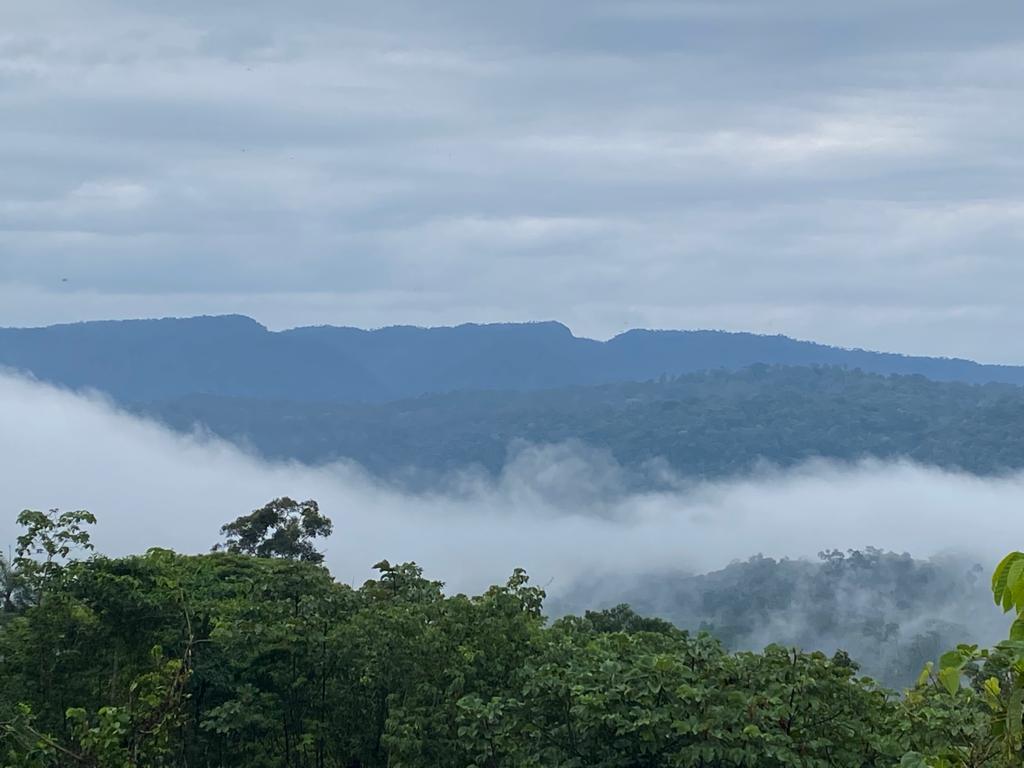
Our work to demarcate and protect Napo-Galeras mountain, as if invoked into existence by the holy spirit of the mountain itself, had been occurring simultaneously, but not as a part of, an initiative being spearheaded by the GTZ that was pushing for higher protection status for the region. This organization with funding from the German government was pressuring for higher conservation measures for the Sumaco volcano. This alongside multimillion dollar grants to the park service for the region to receive National Park status, Ecuador’s highest conservation agreement. We heard from contacts in the park service that there were no maps for Napo-Galeras and it ran the risk of being left out of the soon to be declaration to National Park status. It was clear Napo-Galeras was being omitted from this plan. The need to present an irrefutably convincing technical report pitching Napo-Galeras be included into the upgrade to National Park status, became clearly evident.
We had already accomplished the maps showing the actual ground level limits of the Kichwa communities surrounding the cordillera Napo-Galeras. Showing what could be declared as a higher protection status without being rejected due to the excuse of human intervention. Our mapping project revealed that the majority of the cordillera Galeras, 14,687 hectares remained free of human claims, as well as 3,700 hectares of an important low land sector within the Tropical Wet Forest bioregion. We had already worked to relocate six colonist settlers living within the reserves northern boundaries, leaving the entire limits of the park surrounded only by Kichwa speaking comunas. Who, I might add, are also colonist being they were able to access the region due to the new Hollin-Loreto road. Some Kichwa of the area do have much older claims on the land though as the region north of Galeras was a hunting territory in the past, and a travel route to the old Kichwa Village of Avila Viejo on the flanks of Sumaco volcano. The region east though where many Kichwa communities are now located was once part of the Waorani territory. This is clear with the history of the Kichwa Village of San Vicente del Río Bueno, closer to the Napo-River, where Vicente Legisamo was speared to death by the Waorani in the mid 70’s. The story was told to me by Vicente’s brother Eduardo, the first colonist to settle in the area. He married a Kichwa women and brought Kichwa speakers from Tena to populate the region.
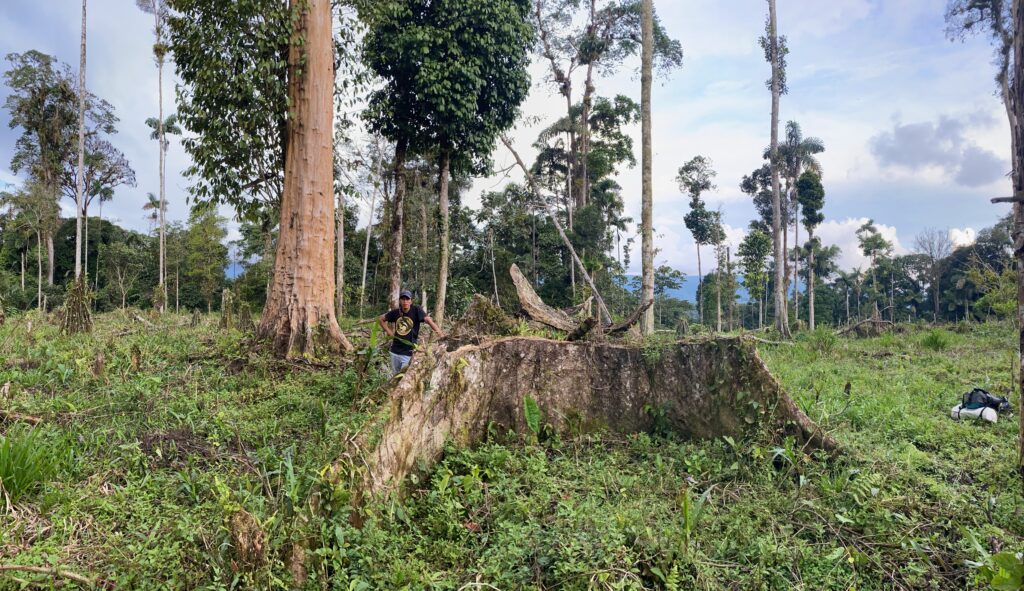
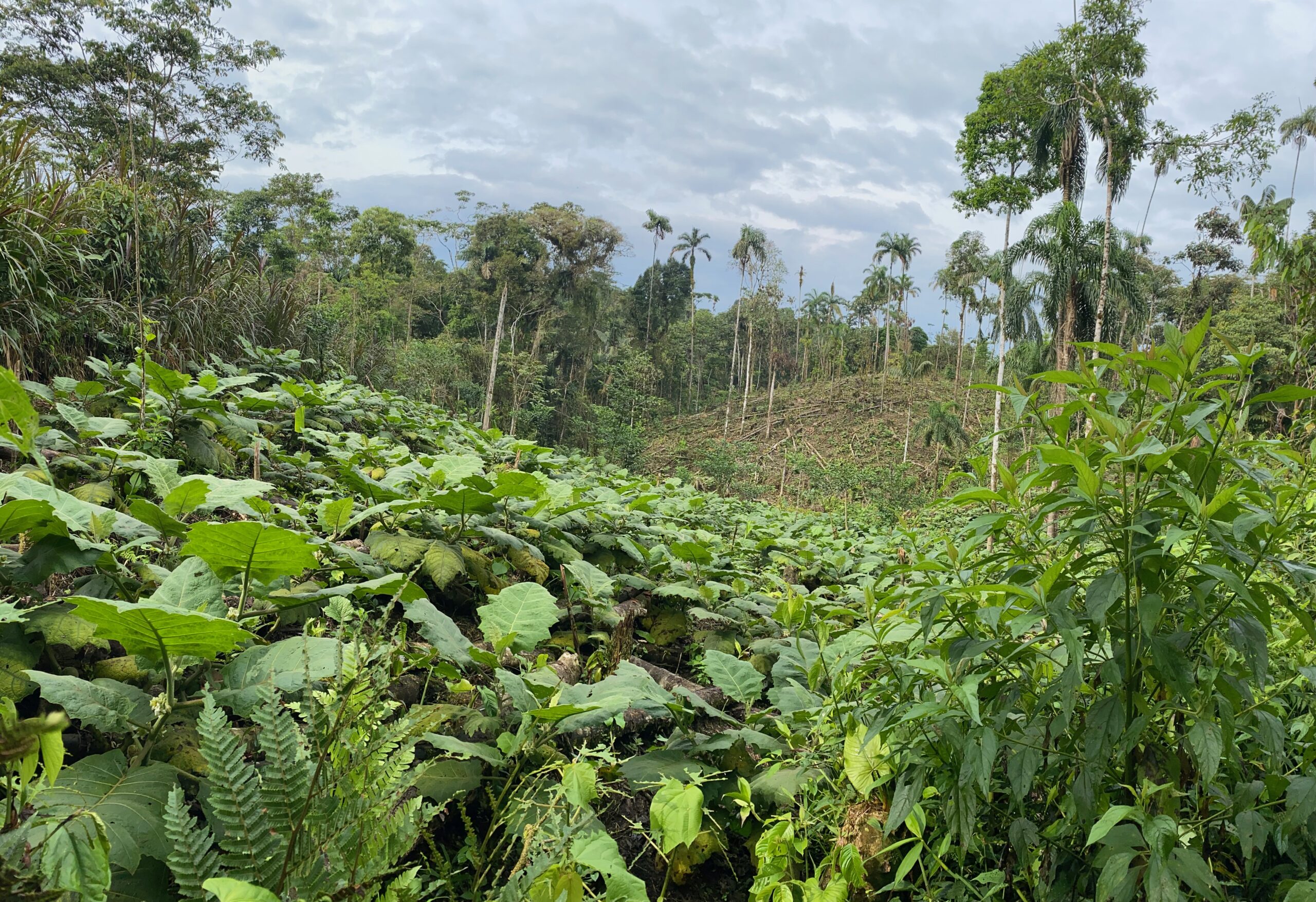
After overseeing the process to relocate the six colonist families, we began another phase of the project to map and explore the area on Galeras eastern slopes. The first time we went in to visit the area known as Santa Rosa de Arapino, we got good and thrown out by the local comuneros. (Comuneros are the people who comprise the local Kichwa speaking communities today found in the region.) They had heard what was happening with the relocation of the colonist settlers at mountain’s northern boundary in the Pucuno River gorge and thought we were there to do the same to them. They escorted us to their community boundary, on a long hike through the mud in silence. Just as we were to depart, I said, “We will gladly leave, just keep in mind though, that were the only ones who will ever come here in the name of the holy mountain, in the name of the end of the world jaguar itself, and were only here to help you protect this place.” It wasn’t long before they sent message through the town mayor asking us to return, and we were back on the scene. It was clear that the only way to have the surrounding comuneros support the initiative was to inspire them to take an active role in protecting what was still left unclaimed. And we were able to gain their support when they saw we were there to legitimize their community boundaries and share ideas that they resonated with.
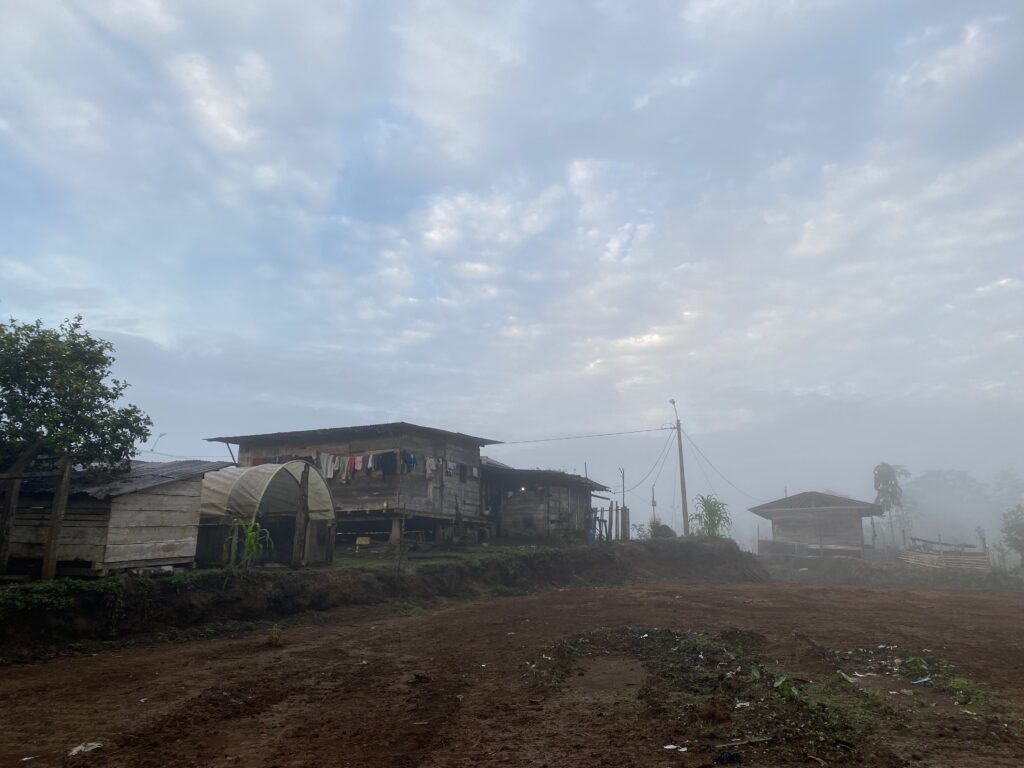
Soon we returned and the community meetings began. We explained the National Park must be seen as a nest, out from which many good things come, everything inside the nest though must be protected, it must be left just as it is now, in its original and virgin state. The comunas had claimed exquisite lands and it was wild to see such a place and know that it was the beginning of a major ecological transition about to occur. Large families with dismal economies needing to see how to make it off the land, in the heart of biological diversity, with sadly only unsustainable and ecological degrading options at hand. We spoke of ecotourism potential and of the benefits of living next to a National Park and in light of this they will eventually receive support from government programs for their communities in parks buffer zones. Maybe not yet but as time progresses and these areas gain more attention, they will receive support for community projects. They asked us to analyze the economics of the logging going on, and it was deduced quickly that they are being highly taken advantage of. Colombian loggers would give them a chainsaw in exchange for five large trees, after which the chain saw would break and they would have no trees and no saw.
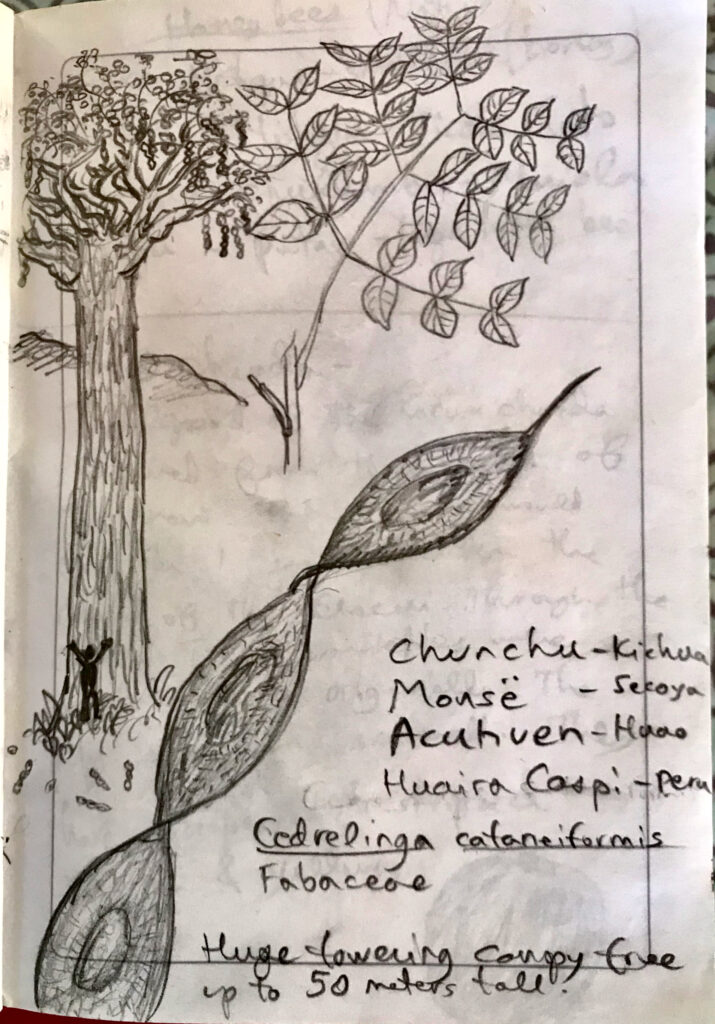
Massive Chunchu trees (Cedrelinga cateniformis), considered among the Siekopai as a sacred tree called Monsë, “Day Tree,” being butchered for chump change. Legend relates that the Monsë tree grows at the center of the sacred hoop of life, among the Siekopai the bark is used as an emetic to cleanse oneself for the ceremonial imbibition of the ancestral rainforest plant medicine of Yagé. We recommended they halt immediately all logging and sell the trees not once, but a thousand times via ecological tourism, that also rescues the culture. We held Permaculture courses and spoke of soil regeneration and sustainable agriculture. We shared knowledge of medicinal plants and held ethnobotanical gatherings aimed at raising the common body of botanical knowledge. We spoke about alternative economies and about improving their cacao and making products; that they must focus on opening markets for their crafts. Essentially we spoke about the need to become more self-sufficient and less reliant on the outside world. As it will be this that ultimately brings them the most security.
And we spoke of the legends and cultural implications for Galeras and that we sincerely hoped they would see it as a holy gift from our creator to be stewards of this sacred place. We prayed together and drank chicha and celebrated too. They had never had anyone come around and give this kind of attention; right as these fledgling communities were taking form.
Wairachina Sacha ~ The Rainforest of the Purifying Winds
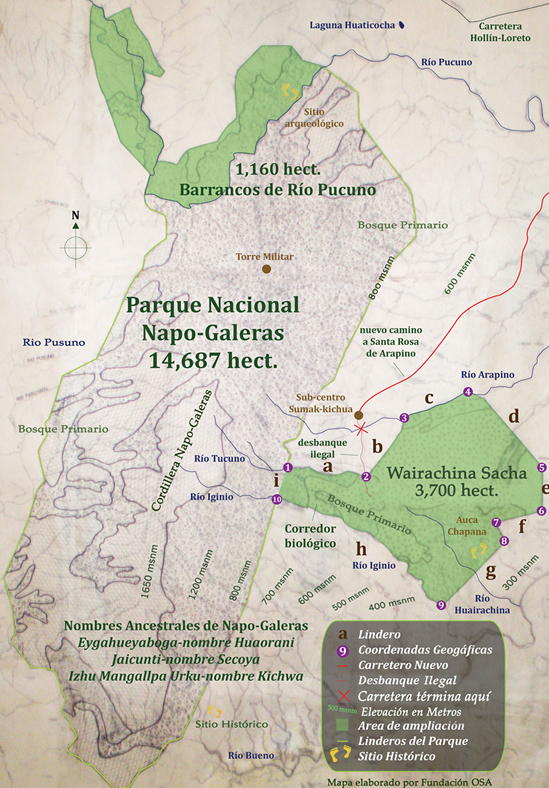
This process also revealed a very important reality. This being that a significant portion of the eastern lowland sector, that of the Wairachina Yaku watershed had still been unclaimed. An area we came to call Wairachina Sacha, “The Rainforest of the Purifying Winds.”
After further study it was revealed that behind Wairachina Sacha were land claims that would separate the possibility of an undisturbed corridor from the lowlands at 300 meters above sea level to the cordilleras high ridge at 1650 meters. It was preserving this intact gradient that had my passion glued as to what to do next.
To resolve this we managed to secure a biological corridor, as seen on this here map, by actually paying out one of the community members and having the community allocate the family a new lot in a different part of their community land claim. All this work came after many community meetings and socialization with the surrounding villagers. At the beginning it was rough. Thanks to grandfather Cesar Mamallacta, a man with a heart of pure gold, who accompanied us. Grandfather Cesar spoke in the native language of Runashimita; deeply from his heart and highly in our favor, reiterating time and time again that we come in the name of the mountain, in the name of the birds, animals and trees. That we come with an idea that will not perish, for the vision we share is one of goodness and beauty.
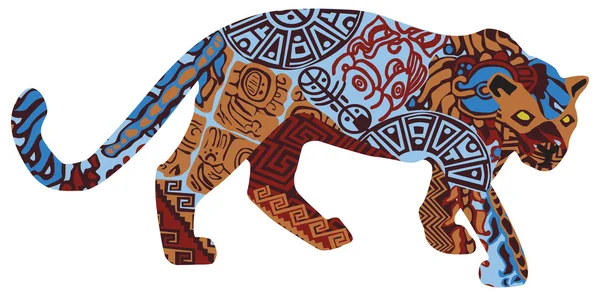
in a net; for having brought it to a zoo in Quito
At one such meetings, a man came out slightly drunk, and began accusing me. He said that I had caught the Mundo Puma in a net, another name for the End of the World Jaguar that is believed to reside inside the mountain, and that I had brought with a helicopter to a zoo in Quito. Eventually I was able to respond when it was my turn to speak. I replied saying that if that were the case I’d have no reason to be here now bothering you. I’m here to inspire you to protect the holy mountain of Galeras to ensure the Mundo Puma does not come out and eat us all! Everyone cheered in joy and more and more came to listen to the ideas of the crazy gringos, on fire with passion for the rainforest! Another villager hugged me crying in joy. He said that he agreed deeply with everything we spoke of, and it was so refreshing to hear what he always knew to be correct now being spoke of for the first time among the entire village.
Amazingly so, with a shoestring budget and rubber boots full of passion, our work helped consolidate the boundaries of what could now be protected. The above work took, I might add, the greater part of 4 years, this being between 1990-1994. Sure enough the work was strong enough to have the government include Napo-Galeras into the National Park status, and the new park came to be known as Sumaco Napo-Galeras National Park. This was epic indeed! Also amazing to see was how our initiative, called Demarcation and Protection of Napo-Galeras Mountain was able to inspire all the communities surrounding Napo-Galeras mountain and Wairachina Sacha to participate in the conservation and protection of the region to ensure others would not claim the land inside the protected areas and hopefully live softly in this precious rainforest region they now find themselves in.
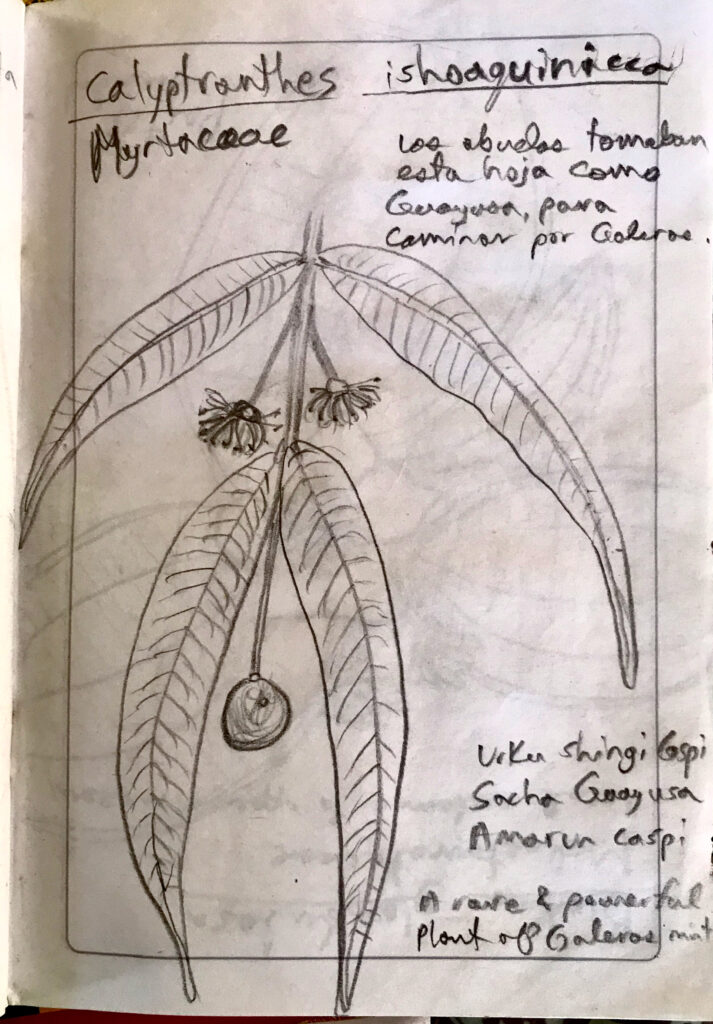
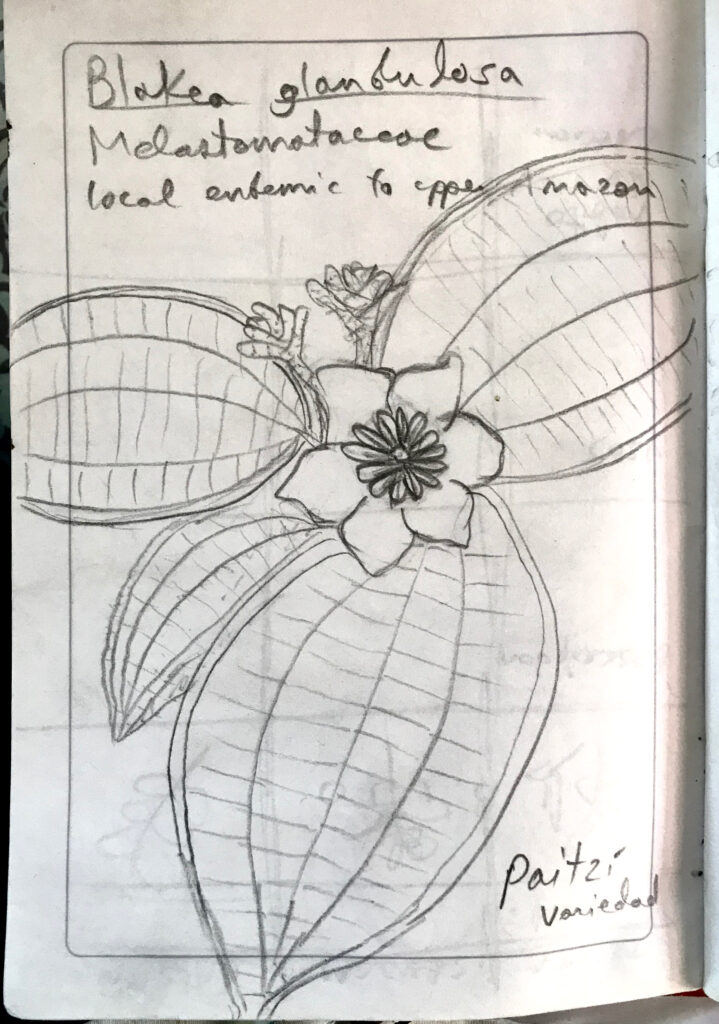
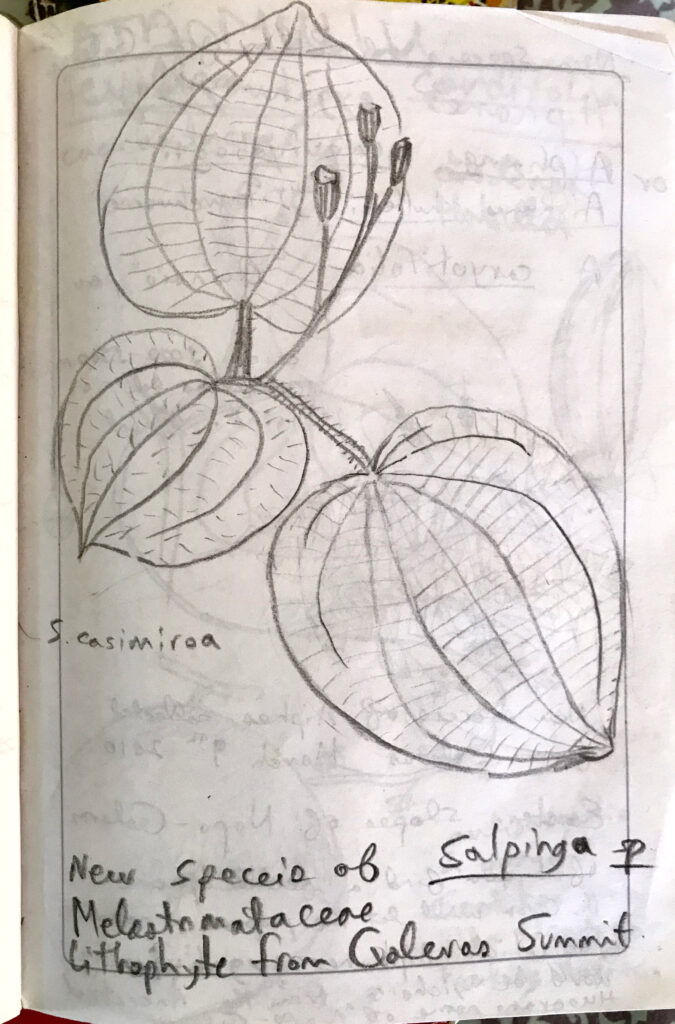
Getting Wairachina Sacha Back on the Conservation Map: 2010 Initiative
And this effort lasted 16 years! Until the park service went to go clear the limits of the National Park in 2010. Only then did all the comuneros see that the lowland sector of Wairacina Sacha, was not actually “inside” the park. Wairachina Sacha is outside the legal limits of the National Park, yet within the limits of the first conservation status placed onto the region, that of a Patrimonio Forestal. Among the most priceless regions of biodiversity in Ecuador’s upper Amazon was being dropped like a rock into the river. And then wala we show up again! And we were there on a big fishing mission indeed! The only Tropical Wet Forest remaining that could be included in a National Park in Ecuador’s Amazonian region. This is so due to the fact the Ecuador’s Amazonian protected areas are all below 250 meters elevation and above 800 meters elevation. The critical region of biodiversity, the Tropical Wet Forest, that is the overlapping edge between the lowland Amazonian Tropical Moist Forest and the rainforest of the Andean slopes, an area rich in endemic species, the origin location of cacao, not being represented in the SNAP – Ecuador’s System of National Protected Areas. Seeing all this led to a whole new conservation adventure!
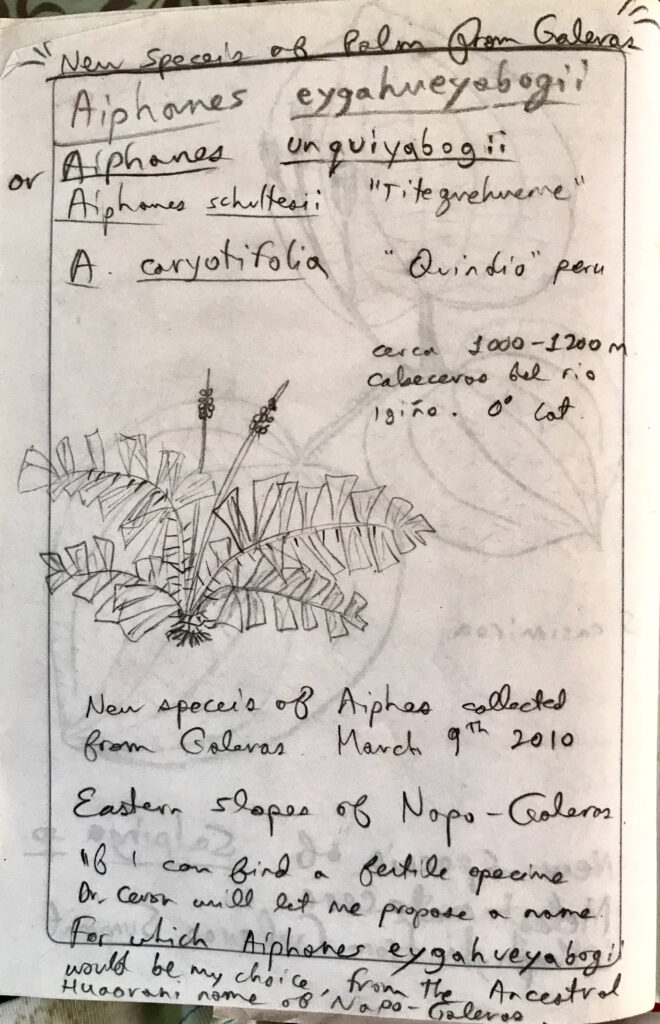
In light of this, in 2010 an inspiration arose to engaged in yet another Rainforest conservation adventure. With the encouragement of my old friend Benjamin Mamallacta I was inspired to return. The mission now was to reevaluate the situation; initiate a process to secure greater protection status for this priceless biodiversity region area east of the Napo-Galeras massif. This time though we discovered an illegal road about to pierce right through where in 1994 we successfully negotiated the biological corridor. Fortunately the tractor sank so deep into the mud they were obliged to halt, then we used legal resources to stop it once and for all. It just happened to be the UNESCO International Year of Biodiversity as well and we wrote letters to UNESCO, who actually did reply, requesting the government consider our petition. The new park service maps no longer reflected the area to have the original conservation status from 1987, that of forest patrimony, that under Ecuador’s new constitution now has a much higher protection status than when we started in the early 90’s. Via petition signing, an information campaign and many meetings with local government representatives. Complete with ground level commissions that brought representative from the park service to see the region first hand. Being the road was illegal, it was fortunately swiftly stopped! Wairachina Sacha as a patrimonio forestal was put back on the new conservation maps under the category of buffer zone and the need to protect this place was again corroborated on a governmental level.
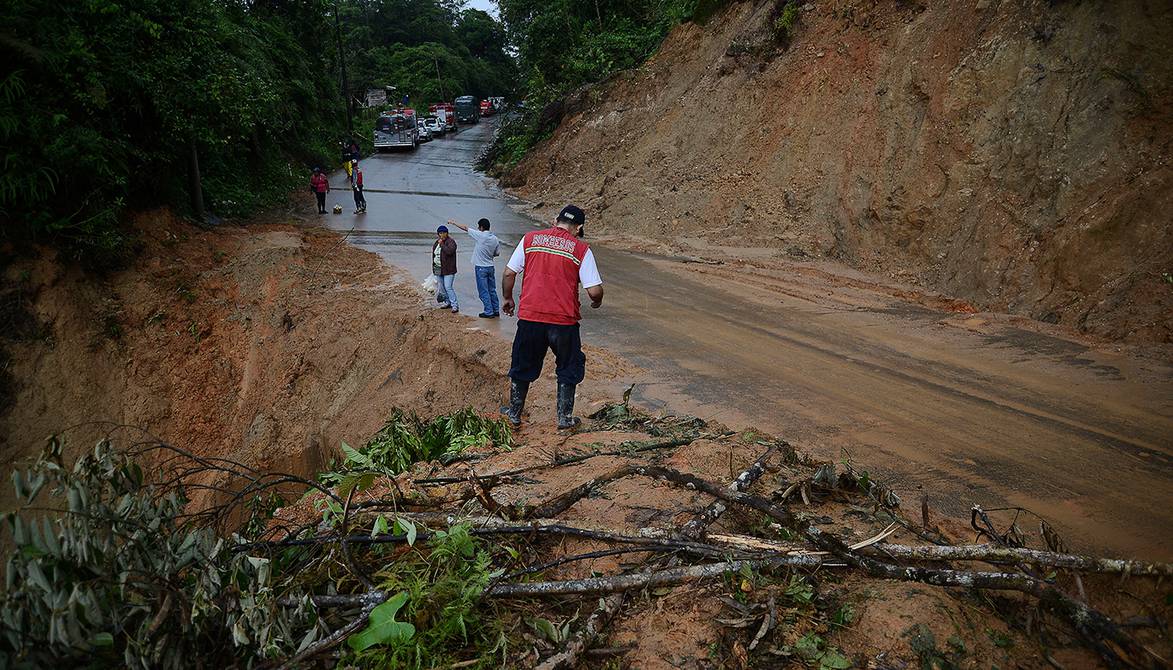
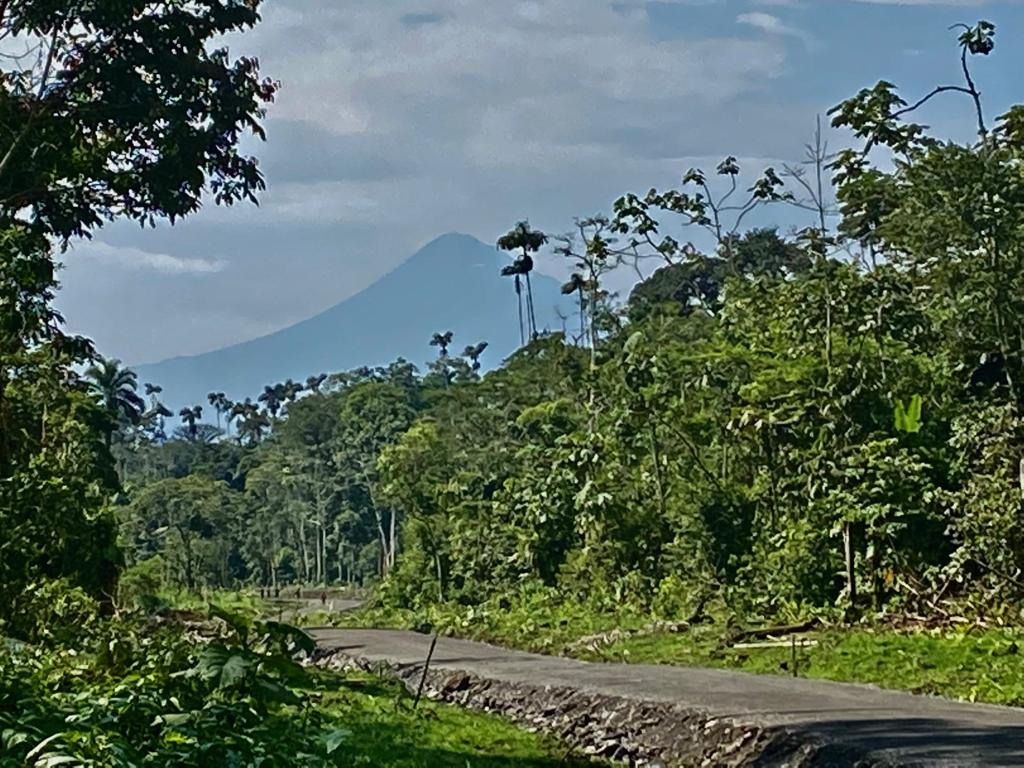
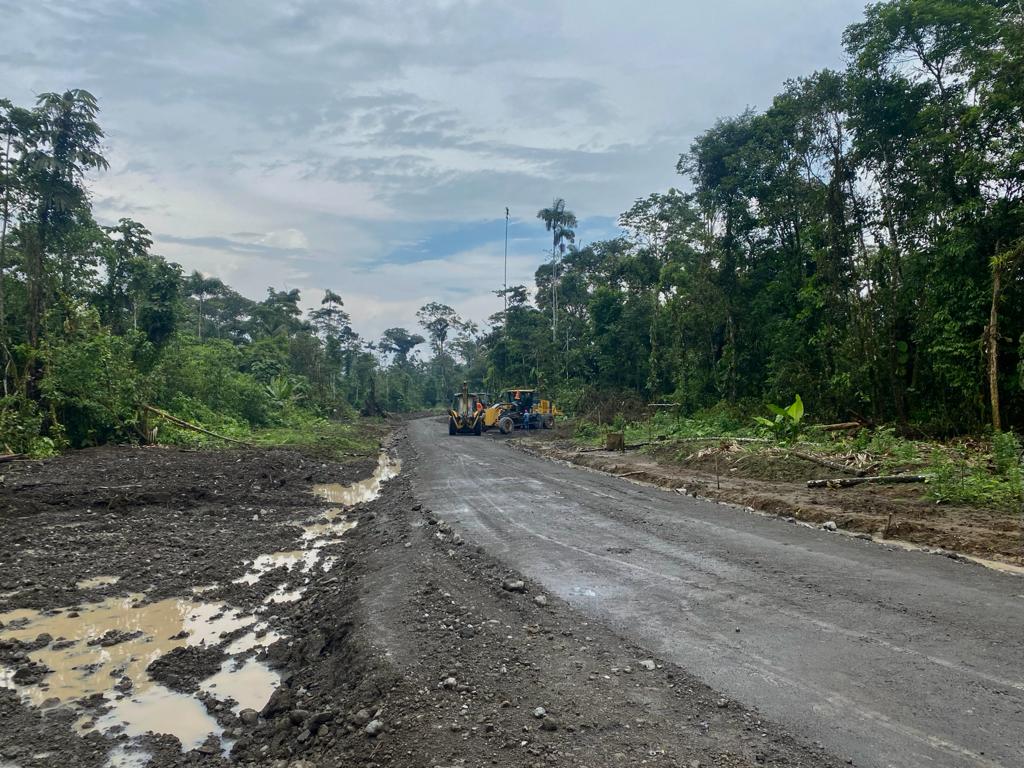
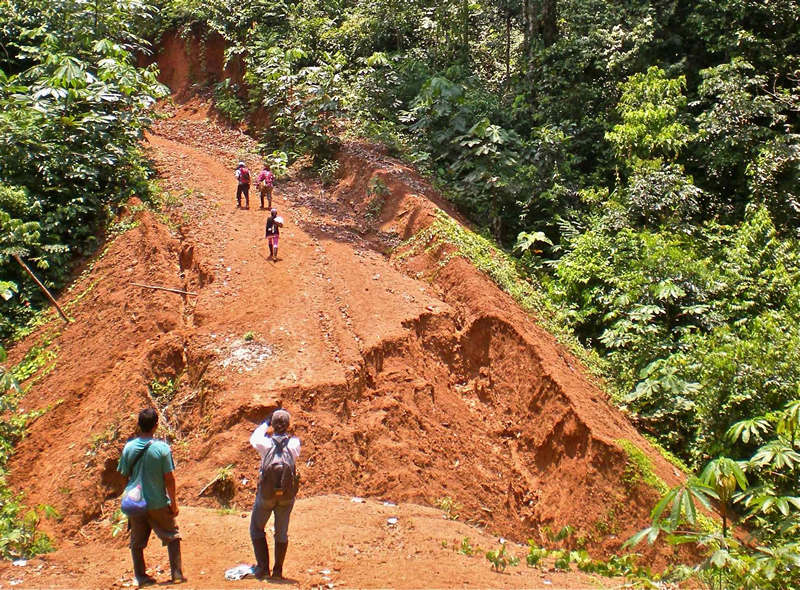
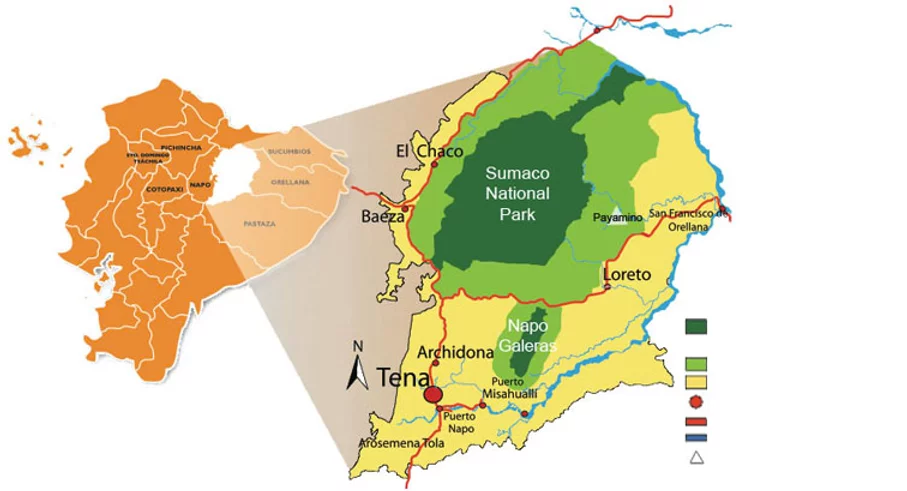
Amazingly so and much to my surprise the communities had still not let anyone claim the area of Wairachina Sacha. They had remembered us from 1994 with fondness and we lifted up yet again another round of community meetings focused on re-socializing the need to continue protecting this region among the local community members and neighboring comunas. It was agreed by the surrounding communities that this they would continue to do! There’s a lot more I can write about this process, yet for the meantime, I will leave you here only with the end result, that thanks to great spirit, and rubber boots full of passion, was successful! Self-funded from savings from our family operated rainforest and ocean ecological tourism and yoga center in Costa Rica and small donations from friends, we were able to accomplish, in my humble option, a whole lot!
As part of the multidisciplinary task at hand, a botanical expedition was organized with Dr. Carlos Cerón, curator of the Alfredo Palacios herbarium at Ecuador’s Central University. On this trip it was discovered that this area east of Galeras is the evolutionary center of the Malvaceae family, this being due to a disproportionate amount of plants in the Malvaceae family found. Including among these cacao and many cacao relatives. Do check out my previous blog entry about this fascinating topic, Cacao The World Tree and Her Planetary Mission.
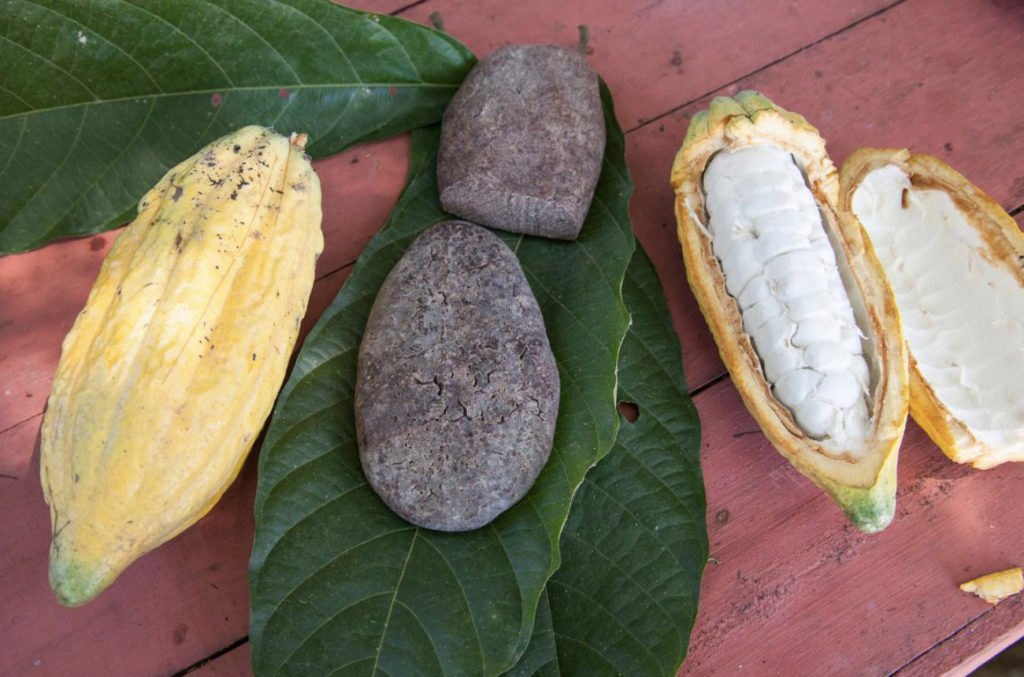
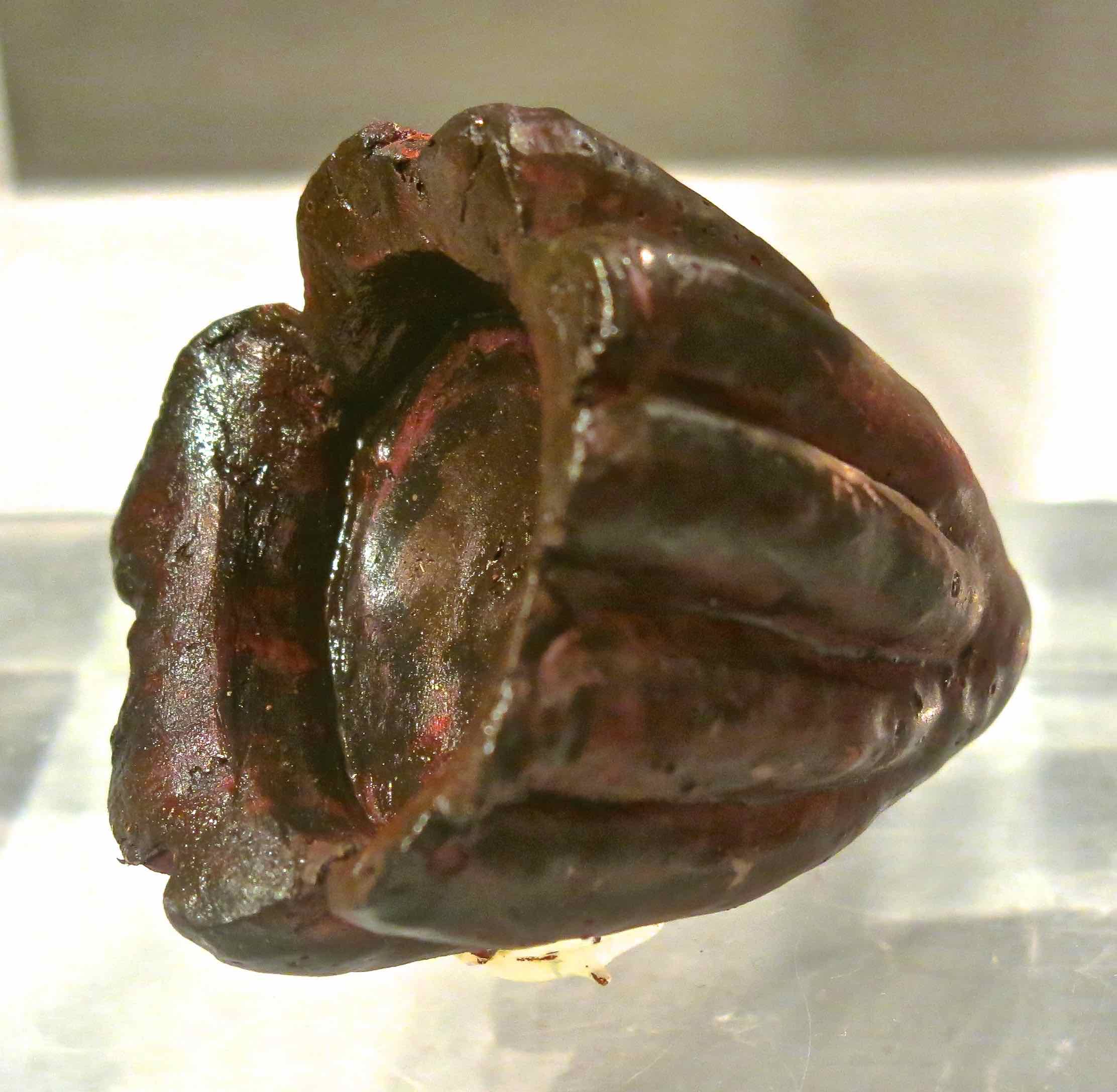
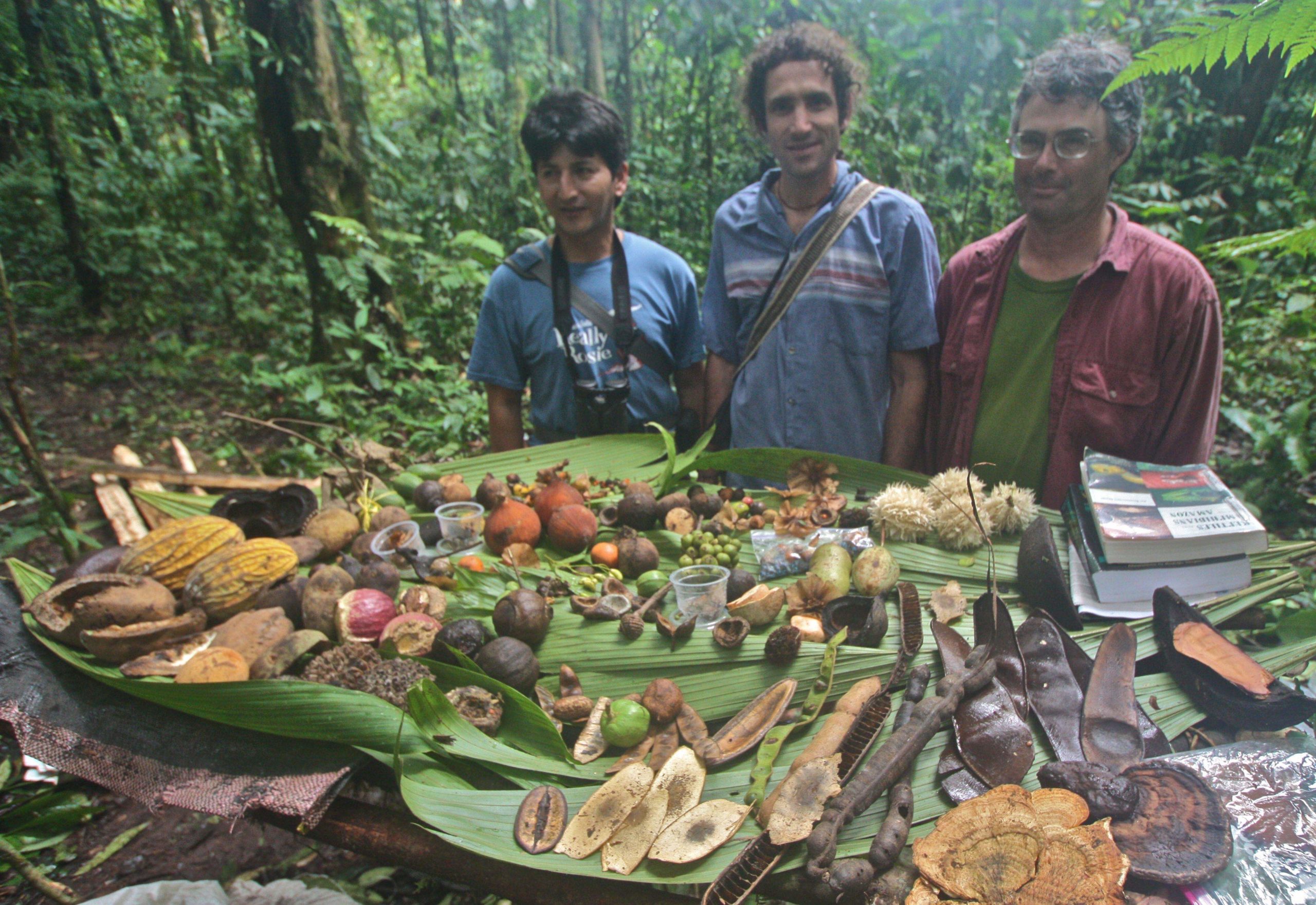
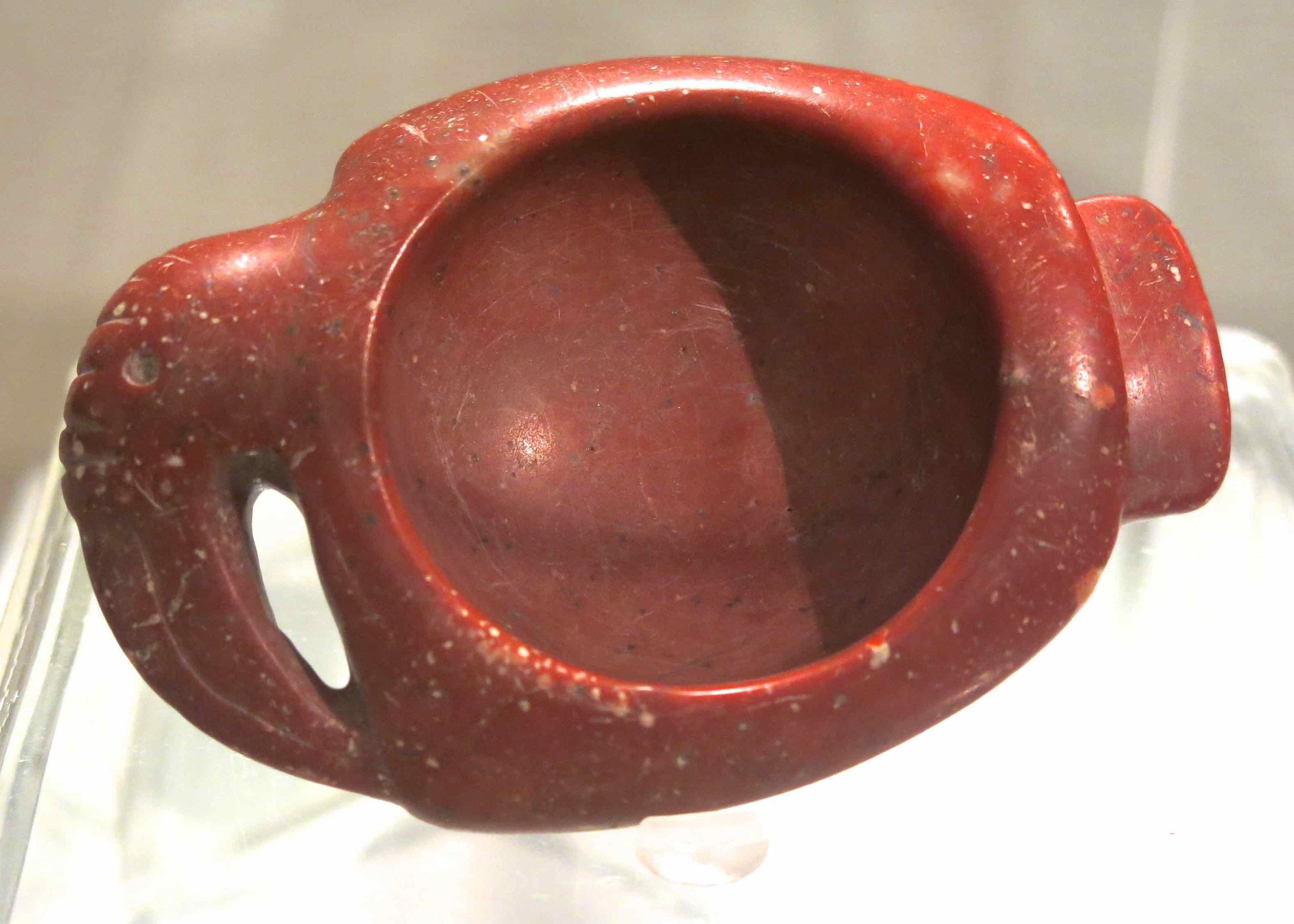
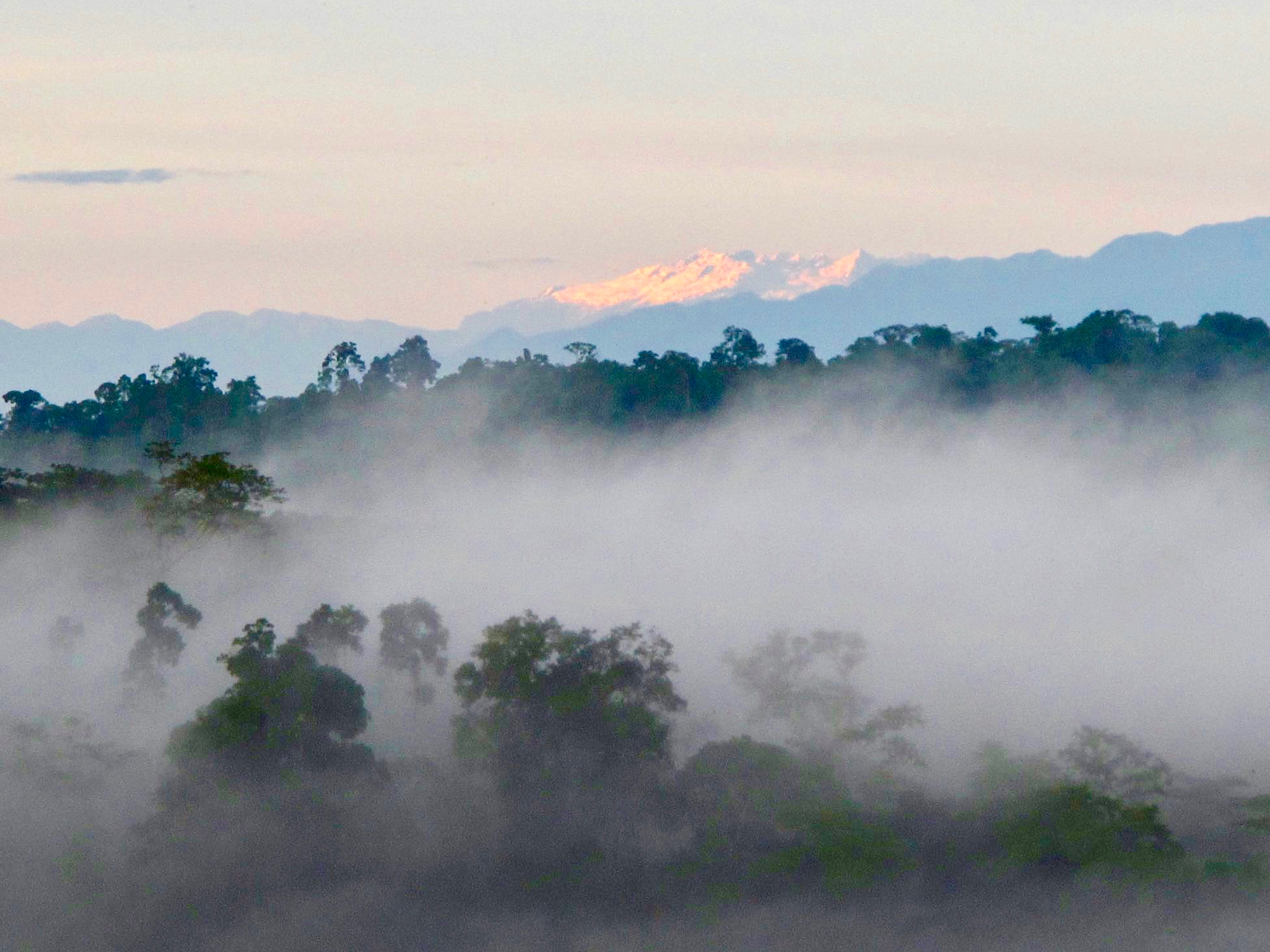
Then on the way out at the town of Huaticocha the following occurred, leaving on me an indelible memory. We were limited on gas, so I asked at a local tienda (small food shop) if they might have a few gallons they could sell us. A man sitting there looked at me attentively and suddenly called my name, “Jonathon!” It was one of the settlers that I had relocated in 1994. He remember me and with great joy and he siphoned the gas from his truck for us to use. He pointed at the ridge line of tree in the not so far distance, the Napo-Galeras National Park, and said, “See that line of trees? That is there because of you!”
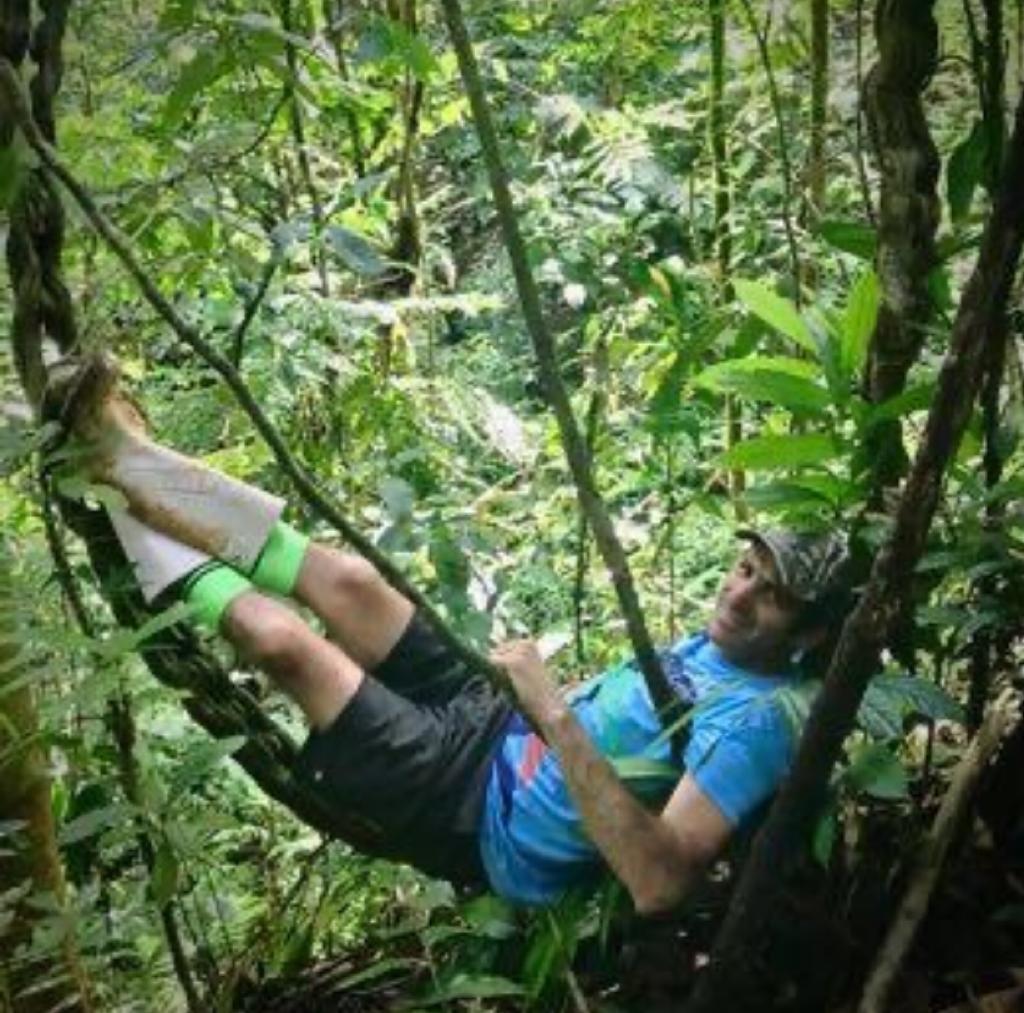
He went on proclaiming, that I was the first and yet only one that has ever done anything important in their town. He handed me his car keys and said that any time I needed his truck or a place to stay, that everything he owned was faithfully at my disposition! He said that he had gone one to become an agronomist inspired by the talks we gave, and he mentioned the other settler families we had relocated from the deep wilderness to the two large properties we were able to purchase and divide among them near the town, had all devoted themselves to upholding the permaculture principles we had left there as a teaching. I thanked him deeply, and that it was he who has given me the biggest gift. To see that the efforts we gave, showed results, and over so many years! And I was able to return to my hammock in Costa Rica on the Osa Peninsula, on the banks of mighty Pacific Ocean, to the splendid Ocean Forest Ecolodge, with a robust cheek to cheek smile on my contented face.
The Mamallacta Family Biological Reserve : 2021
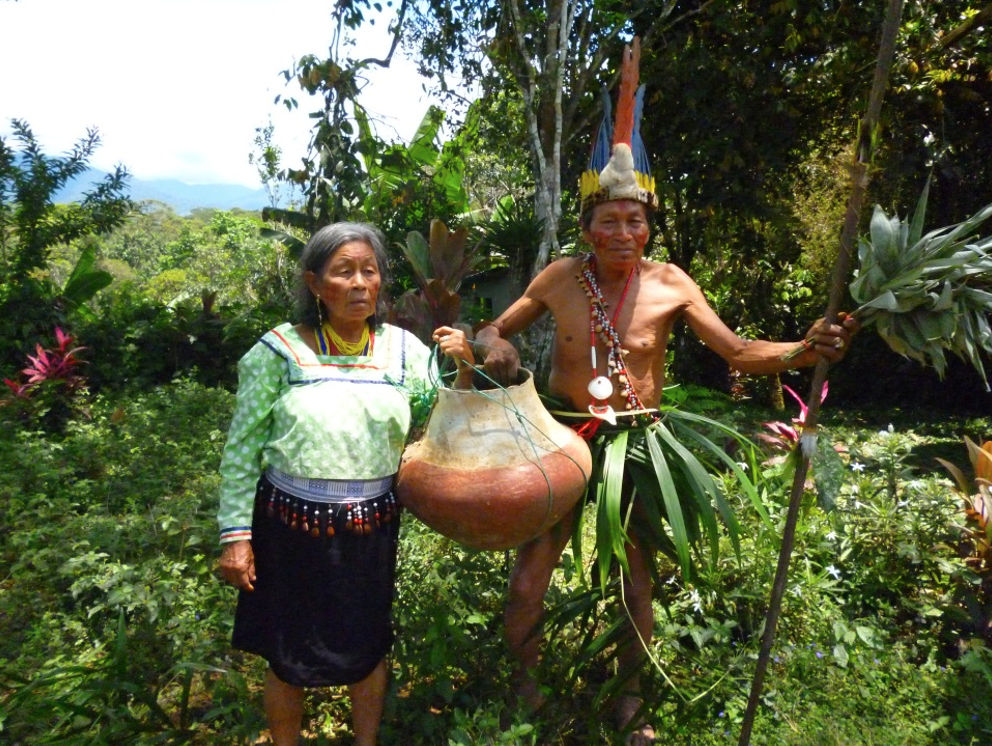
In August of 2021 I returned with a group of friends to visit the mighty Pusuno River, the river of bubbles, whose purity and beauty has so deeply on me left her impression. This time working with Benjamin Mamallacta we began a program to protect grandfather Casimiro Mamallacta family Purina Tambu, back to where it all began! Purina Tambu literally translates from Runshimi, the Kichwa peoples language, as “a place that is walked to,” yet the term means so much more. “A place that is walked to,” is a place far from the bustle of human bedham, a place where the the quietud of nature permates. It is much more than this, it is where the ancestral ways can be upheld, this relates to dieting with the sacred teacher plants in order to learn and to practice the art of concentration. We can deduce then, that the Purina Tambu, is the legitimate ancestral university, where the individual can receive teaching straight from source through plant allies and mother nature. And like this gain strength and wisdom to live the each and every day. Here on the western slopes of Napo-Galeras, 1000 acres of wilderness have been delineated, where the Mamallacta family are focusing their conservation efforts. In late 2021 the boundary lines of the reserve were cleared and we are just about finished fixing up our original base camp, the house we built in 2007. This was made possible thanks to a small grant we applied for and received from The Global Green Grants Fund. I will write a seperate blog to share more about this initiative, for now though, allow me to conclude with the follow.
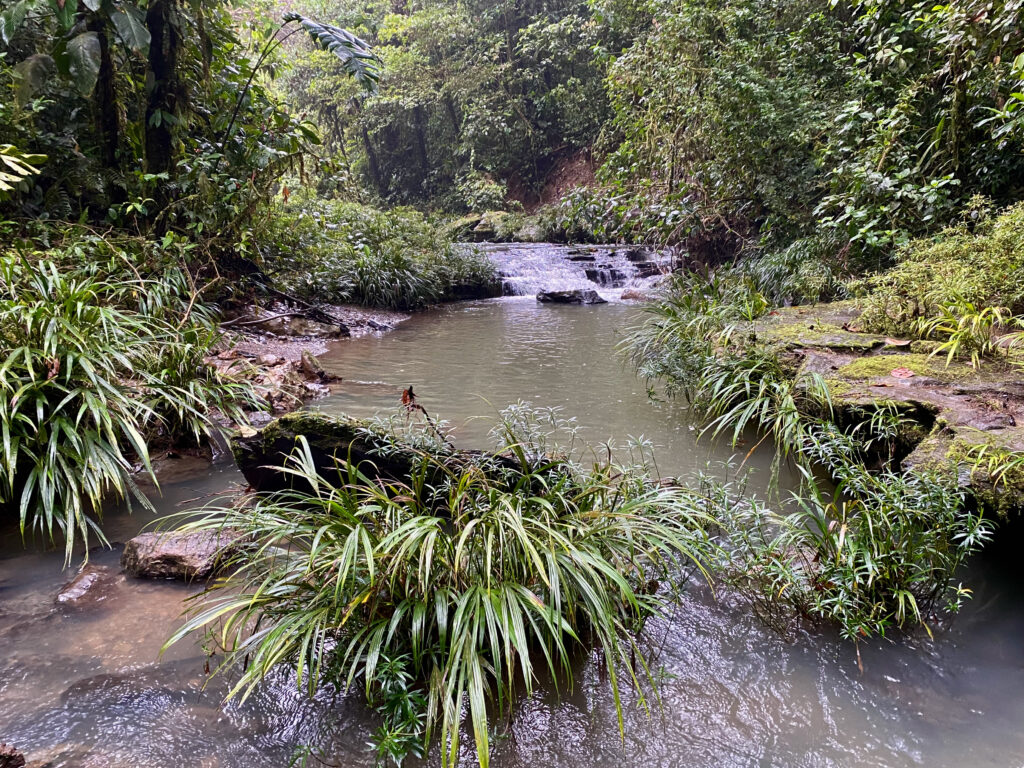
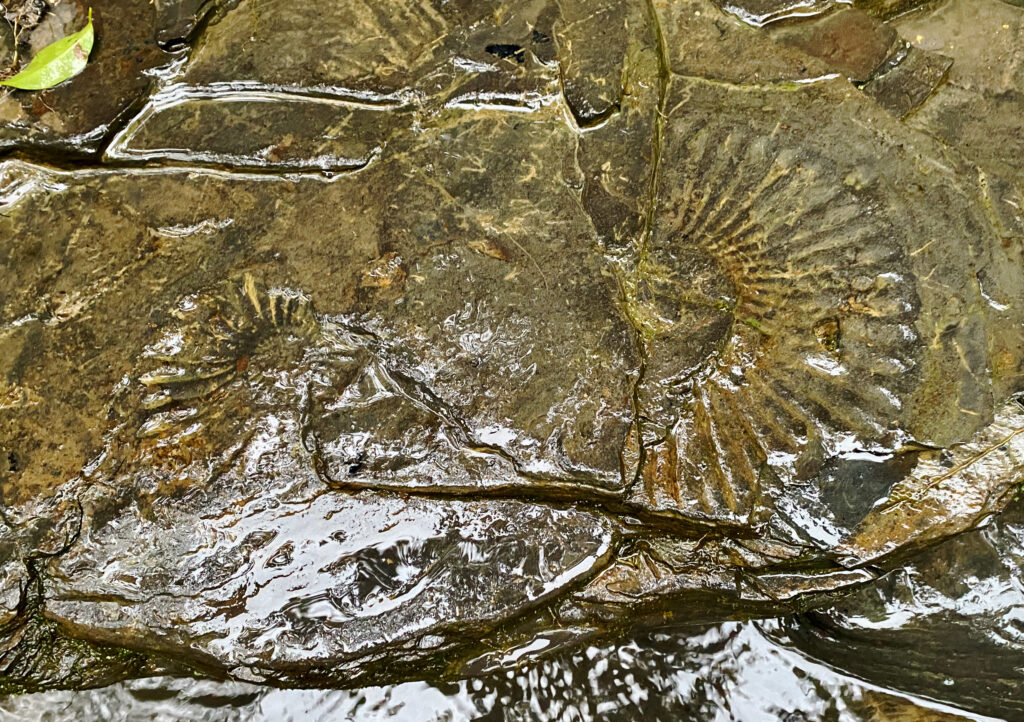
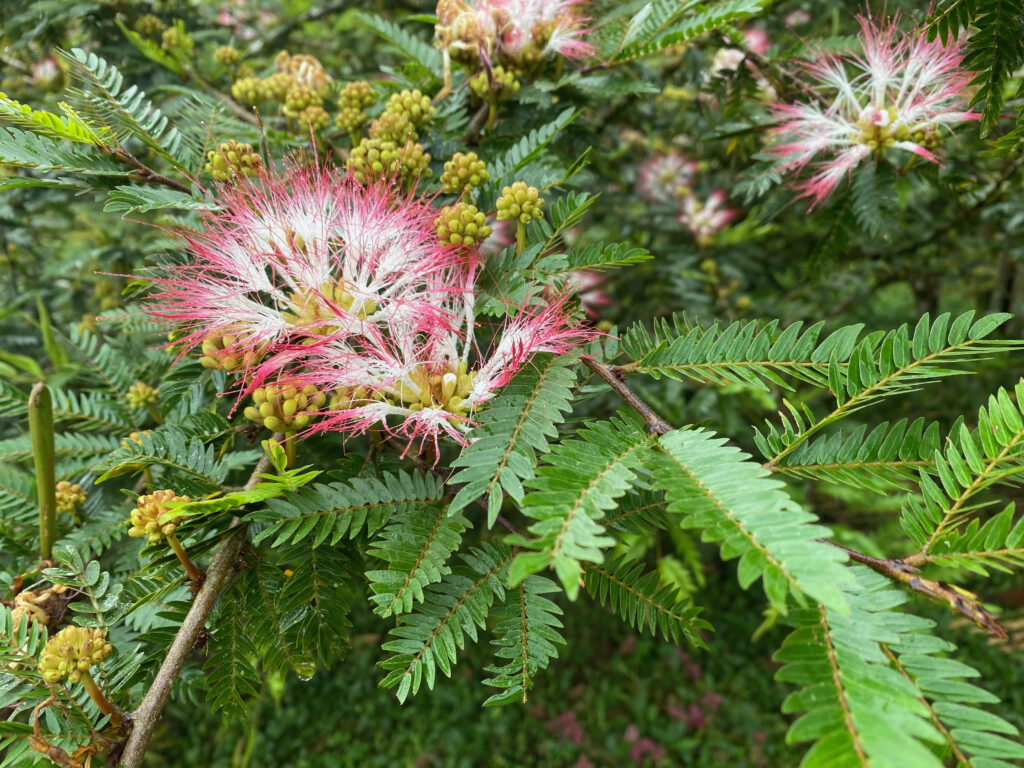
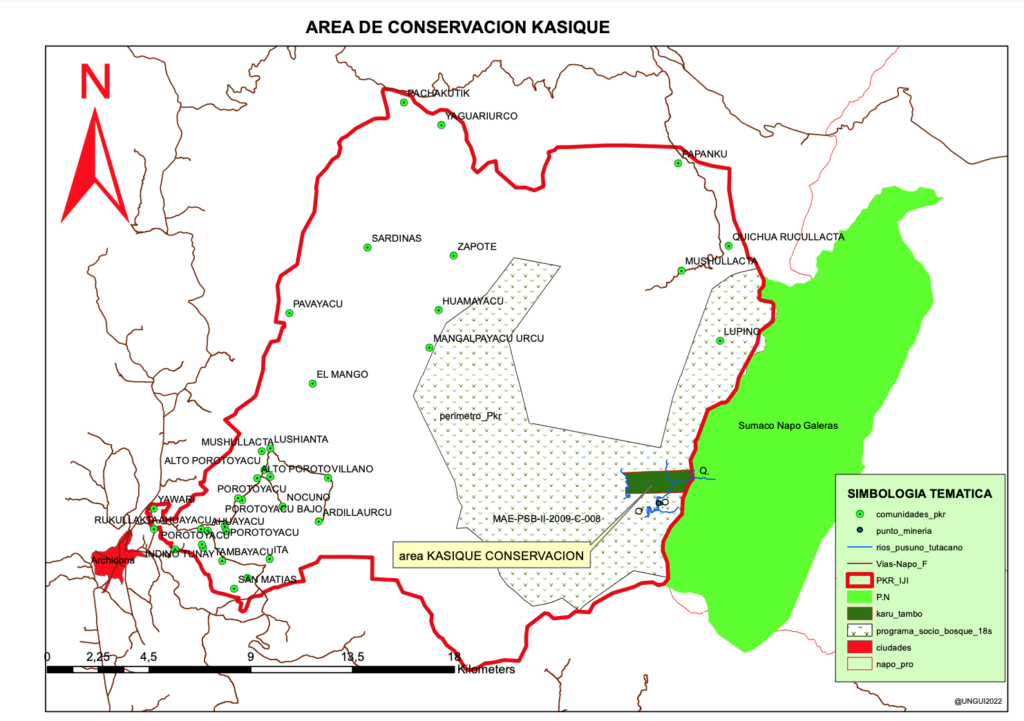
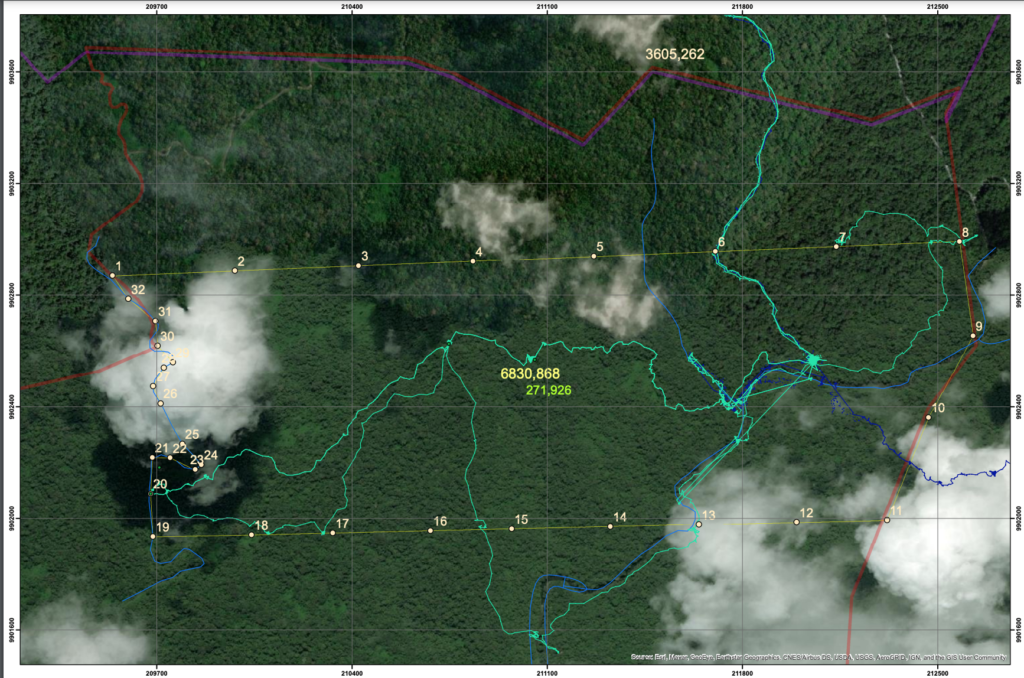
Napo-Galeras ~ Woven in a Rich Mythological Fabric
The mythologies associated with this mountain are profound, running deep in the psyche of the people. There are accounts of Cayu Runa (lightning man) whose testicles at Galeras are transformed to stone, of mythic dimensional portals that yachac (wisdom keepers) of old would use to transport themselves to festivals in the high Andes. Legends of the origin of plants that grew from the heart of Shiu Amarun, the glistening fertility boa of the Pachamama, after a brutal battle with Atacapie, the seven headed boa of chaos and havoc. And of the Jurujuri, ardent protectors of the wilderness, who sucked out the eyes of offensive hunters. And there is talk of the Ingaru Supai whose heart hangs in his hollow chest, from which was made the magical maianchi powder, from where grew the Pumallullu a mystical plant of the people used for jaguar transformation. And the stories continue, relating accounts of Waorani chasing even don Casimiro off in his youth, and as far as the western slopes of the mountain, at the Río Pusuno. Casimiro chuckled, feeling it was just their way of saying hi. And there are the legends of the hero twins, Kuilluru and Ducero, and how they passified the powers of nature to allow humanity to prosper before ascending to become the dawn and dusk star that is Venus. And it was they who trapped the Mundo Puma in a cave at the mountains summit, informing the people that a day would come, in order to reestablish planetary harmony, when it would escape; this time to devour offending humanity. These are just some of countless legends related to the mountain of Napo-Galeras, like the lines emanating outwards on the ammonite fossils there found, remnants of a millions of years ago seabed that Amazonia once was.
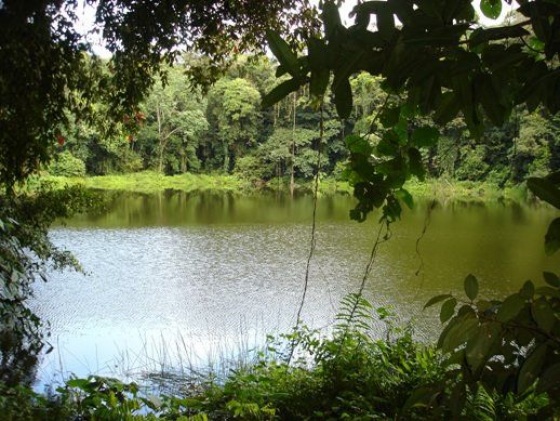
I will leave you with one more insight, the legend of the Lake of Huaticocha. The town of Huaticocha receives its name from a lake near the town, the Lake of Huaticocha. This small lake is an anomaly being that it seems out of place, in the middle of a relatively steep forest valley and it has a powerful legend, one now few remember. Kichwa elders relate that the following phenomena there occurred and not too long back. An indigenous family of the name Siquihua who lived there were being harassed by colonist to fulfill orders of pita fiber. On one such order they were not able to complete the timeline, worried of the reproach they performed an ancestral rite, a ceremony with the sacred plant medicine of ayahuasca. They made a new clay pot and drank copious chicha (a staple gruel made from tubers or gran) as if in a festive celebration, so much that they began to vomit which they did into the newly made clay pot. That night they drank their ceremonial entheogenic ayahuasca brew. During the ceremonial trance the shaman family leader spilled the vomit onto the ground around their home. Where the vomit touched the earth, a lake formed, and the entire family sunk into the lake, complete with their house, their garden and all their pets, where they to this day live in an alternate dimension. Locals relate that this lake is indeed enchanted, being that when people attempt to come close the sky darkens and it begins to rain.
The legend of Huaticocha lake is about seeking refuge. Refuge from the impact of colonialism. Much in the same way, as the spirit of the mountain has invoked into action the very own protection of the mountains ecological integrity. Seeing to it that this holy place receive Ecuador’s highest legal protection category. Allowing for the refuge of countless species and spirits, that claim this mountain wilderness as home. The conservation of Napo-Galeras, we might deduce, in a way not so evident to see, is staving off the apocalypse itself! Holding back the emergence of the “Great Earthen End of the World Jaguar,” that is believed will emerge on judgment day to devour offending humanity. Or maybe it has already escaped, as some elders believe. This in light of all the havoc and destruction prevalent in the world today. Leaving us not much else to contemplate outside the phenomenon of understanding the universal subtle law, and aligning to this. So that at the very least, we may not be lumped into the general category of “offensive humanity.” And the faith of course, is that it’s never too late to shape up, so do please keep in mind…the myth clearly states, that it is the “offending” humanity, who the Mundo Puma will devour!



